Articles by Staff Members on the Great Books as an Essential Element of Classical Education
“I am convinced that classical education holds out the greatest hope for our children’s future flourishing and for renewal of Church life. – Archbishop Salvatore Cordileone
“We are tied down, all our days and for the greater part of our days, to the commonplace. That is where contact with the great thinkers, great literature helps. In their company we are still in the ordinary world, but it is the ordinary world transfigured and seen through the eyes of wisdom and genius. And some of their genius becomes ours. . .” – Mortimer J. Adler
What is the Best Age to Study the Great Books?
© 2000 Angelicum Academy – All Rights Reserved
Drawing from history, educational philosophy, and modern experiences, there is abundant evidence that age 14 is the ideal time for students to begin to engage with the foundational texts of Western civilization. This article explores the historical precedents, educational philosophies, and responses from the Church and modern educators that support this conclusion.
What Does the History of Education Tell Us?
The history of education in the West, spanning over 2,300 years, offers valuable insights into the best age for studying the Great Books. From ancient Greece to early American education, students traditionally began their baccalaureate studies (or the ancient equivalent), including serious study of the great classics of literature, at age 14, typically continuing them to age 18. History reveals that this age period marks a significant time when students are intellectually mature enough to grasp the ideas presented in these works and still open-minded and eager to learn. This age pattern has persisted across centuries and cultures.
The ancient Greek model of education, particularly the teachings of Isocrates and Plato, established a foundation that largely determined educational systems in the West for millennia. Students in ancient Greece, typically between the ages of 14 and 18, engaged deeply with the great literature of their culture, beginning with the works of Homer. This age range was seen as optimal for developing the moral and intellectual capacities required to understand, appreciate and incorporate the lessons and ideals of these works into their lives. The influence of this classical Greek model continued through the ancient Roman period, the Middle Ages, and the first 250 years of education in America until around 1900.
The works of historians of education, such as Henri-Irénée Marrou and Hastings Rashdall, provide detailed accounts of how this age structure was maintained. For instance, Rashdall’s research highlights that students in medieval universities typically began their baccalaureate studies at about age 14 and completed them by 18, graduating with Bachelor of Arts degrees. Werner Jaeger emphasized the “direct line of continuity” from the Greek educational ideals to the Christian and medieval institutions and its lasting impact even to the present day.
This age of matriculation—beginning serious study equivalent to college studies— at 14, and completing such studies by 18—was not only a feature of ancient and medieval education but also influenced the structure of early American colleges until its influence began to decline about 1900.
Why Is Greek Education Important and Relevant Today?
Ancient Greek education laid the groundwork for Western education traditions, establishing a model that has been followed for millennia. The Greek approach to education was holistic, integrating the study of literature, grammar, dialectics, rhetoric, music, math and science into a unified curriculum aimed at cultivating well-rounded individuals.
The classical model of matriculation at age 14, was based on the belief and experience that this was the ideal age for students to begin engaging with complex ideas contained in the great classical texts. This approach recognized that students at this age are intellectually capable of grasping abstract concepts and that exposure to the Great Books during these formative years would shape their thinking and character in profound ways, before unwholesome influences did so.
The relevance of Greek education today lies in its emphasis on a well-rounded, liberal education that prepares students not just for a career but for life as thoughtful, informed citizens. In an age where education is increasingly specialized (the “barbarism of specialization” decried by Ortega y Gasset) and career-focused, the classical model serves as a reminder of the importance of a broad, generalist education that includes the interdisciplinary study of the humanities integrated in the great classics of the past (referred to as the Great Books now, in order to note the inclusion of later great works not written in ancient times).
Was Greek and Roman Intermediate Education the Same as American Secondary Education?
 Although Greek and Roman students, like American high school students, were in school between ages 14 and 18, what they studied was vastly different. Ancient Greek and Roman education was rigorous and focused on studying the foundational texts of their culture. In contrast, American high school education, particularly after the implementation of changes recommended by the Committee of Ten in 1894, became fragmented and dis-integrated, moving away from the comprehensive, integrated study of the Great Books.
Although Greek and Roman students, like American high school students, were in school between ages 14 and 18, what they studied was vastly different. Ancient Greek and Roman education was rigorous and focused on studying the foundational texts of their culture. In contrast, American high school education, particularly after the implementation of changes recommended by the Committee of Ten in 1894, became fragmented and dis-integrated, moving away from the comprehensive, integrated study of the Great Books.
In Greek and Roman education, students were immersed in the works of Homer, Plato, Aristotle, and other great thinkers, developing skills in rhetoric, philosophy, and critical thinking. This education was seen as essential for preparing young men for leadership roles in society. By age 18 these students were equal to or often more intellectually advanced than today’s college graduates.
In contrast, American education, particularly after the changes originating from the Committee of Ten report of 1894, shifted away from the classical model. The introduction of the new intermediate, 4-year high school system, with its segmented, dis-integrated curriculum and emphasis on textbooks rather than primary texts, marked a significant departure from the classical approach. This change has had lasting effects on the depth and breadth of education that American students receive during the intellectually formative years of 14-18.
What Had Been the Age of Matriculation in Early American Education?
 In early American education, the age of matriculation into college closely mirrored the practices of the medieval universities and later Jesuit colleges. Students typically began their college education between the ages of 12 and 14 and completed their studies by age 18. This was true for institutions like Harvard, Yale, Princeton, Rutgers, Columbia, Brown, Dartmouth, and the University of Pennsylvania.
In early American education, the age of matriculation into college closely mirrored the practices of the medieval universities and later Jesuit colleges. Students typically began their college education between the ages of 12 and 14 and completed their studies by age 18. This was true for institutions like Harvard, Yale, Princeton, Rutgers, Columbia, Brown, Dartmouth, and the University of Pennsylvania.
 For example, at Georgetown, America’s first Catholic college, students were admitted as young as 12 in the early 19th century. By 1870, the age of admission was raised to 13, but the expectation remained that students would complete their Bachelor of Arts degree by age 18. This structure reflected the influence of classical educational traditions, in which students in their teens were expected to engage with challenging material and great ideas for a broad, liberal education.
For example, at Georgetown, America’s first Catholic college, students were admitted as young as 12 in the early 19th century. By 1870, the age of admission was raised to 13, but the expectation remained that students would complete their Bachelor of Arts degree by age 18. This structure reflected the influence of classical educational traditions, in which students in their teens were expected to engage with challenging material and great ideas for a broad, liberal education.
What Are the Differences Between Ancient Greek and Roman Higher Education and College Education Today?
Greek and Roman advanced education differed significantly from modern college education in several key ways. First, students in ancient Greece and Rome who pursued more advanced studies equivalent to modern graduate studies, typically did so after completing their general, liberal education by age 18. The advanced studies were not the equivalent of modern undergraduate education but were more akin to graduate-level work in rhetoric, philosophy, law, or later, medicine. Second, students in Greek and Roman higher education were already well-versed in the foundational texts and ideas of their culture by the time they began these more advanced studies.
Finally, the purpose of higher education in ancient Greece and Rome focused on developing well-rounded individuals, familiar with profound ideas and capable of critical thought in all areas, and of assuming leadership positions in society. This is in stark contrast to the increasingly career-focused nature of modern education, where specialization and a focus on job-training often take precedence over a broad, liberal education.
Why and When Did the Age of Matriculation Change in American Secondary Education?
 The shift in the age of matriculation in American secondary education began in the late 19th century, largely due to the influence of the then-admired Prussian militarized-education system and the recommendations of the Committee of Ten. That Committee, established in 1892 by the National Education Association and chaired by Harvard President Charles Eliot, recommended in its 1894 report that American students spend 12 years in primary education, rather than the-then existing 8-10 years, delaying college matriculation to age 18. This added up to four years to the classical model.
The shift in the age of matriculation in American secondary education began in the late 19th century, largely due to the influence of the then-admired Prussian militarized-education system and the recommendations of the Committee of Ten. That Committee, established in 1892 by the National Education Association and chaired by Harvard President Charles Eliot, recommended in its 1894 report that American students spend 12 years in primary education, rather than the-then existing 8-10 years, delaying college matriculation to age 18. This added up to four years to the classical model.
This change was influenced by the educational philosophies of figures like John Amos Comenius, often referred to as the “Father of Modern Education.” Comenius, writing in the 17th century, proposed delaying a bachelor’s degree six years from 18 to age 24, based on his notion that it should correspond to when a man was fully grown in his “natural body” which, based on his rationalist and “scientific” views, he concluded was age 25. Comenius’s ideas emphasized the extension of education and the postponement of adulthood, resulting in a “protracted adolescence.”
 Comenius’ views influenced the Prussian militaristic educational system developed by Johann Gottlieb Fichte that was gradually adopted throughout the United States during the mid-to late 19th century which incorporated the experiments of Johannes Sturm who developed the first “grade” (from Latin gradus – step) or “ladder” system of education in history in which students progressed together each year through grade levels, rather than based on individual mastery of the subject matter. The culmination of these and other experimental ideas on education accompanied the gradual implementation of the Committee of Ten’s recommendations by the states throughout the entire U.S from 1894 to c. 1940.
Comenius’ views influenced the Prussian militaristic educational system developed by Johann Gottlieb Fichte that was gradually adopted throughout the United States during the mid-to late 19th century which incorporated the experiments of Johannes Sturm who developed the first “grade” (from Latin gradus – step) or “ladder” system of education in history in which students progressed together each year through grade levels, rather than based on individual mastery of the subject matter. The culmination of these and other experimental ideas on education accompanied the gradual implementation of the Committee of Ten’s recommendations by the states throughout the entire U.S from 1894 to c. 1940.
By 1940 the system throughout the U.S. kept students in a graded-annual-step program of pre-collegiate education until age 18, delaying their matriculation into baccalaureate studies and later into responsible roles in society by four years.
This new intermediate level between primary public education and college-level public education is what we know today as the modern American public high school—a new form and period of “secondary” education without any historical precedent in classical education. American Catholic educators largely adopted this new model.
What Was the Response of the Church and Many Educators to These Changes?
The departures from classical education in the late 19th and early 20th centuries did not go unnoticed or unchallenged. The Church, in particular, voiced strong opposition to the secularization and specialization of education, which it saw as a threat to the holistic development of young people.
Pope Blessed Pius IX, Pope Leo XIII, Pope St. Pius X, and Pope Pius XI all issued statements and encyclicals condemning the shift away from a classical, liberal education and the increasing control of the state over education. Pope Pius XI, in his 1929 encyclical Divini Illius Magistri, emphasized the Church’s role in education, stating that “the family and the Church have a prior right over the state in the matter of education.”
Educators like Robert Hutchins and Mortimer Adler also responded to these changes by advocating for a return to a classical education model. Hutchins argued that “the road to education lies through great books” and that students should be exposed to these texts at an early age, beginning at 14.
Can All 14-Year-Olds Profit from Studying the Great Books?
The question of whether all 14-year-olds can profit from studying the Great Books is central to the debate over when students should begin their engagement with these texts. Robert Hutchins addressed this question directly, arguing that “the Great Books are great teachers; they are showing us every day what ordinary people are capable of.” He believed that these texts were not only accessible to young students but also essential for their intellectual formation and sound moral development. He explained that familiarizing students to the Great Books at an early age helped to develop their critical thinking skills and their ability to engage with complex ideas, and would provide good moral examples and principles.

 Stringfellow Barr, co-founder of the Great Books program at St. John’s College, Annapolis, used the metaphor of a puppy chewing on a large bone to describe the experience of young students engaging with these texts. He said, “The great books serve the purpose of a very large bone thrown to a young puppy. The puppy will wrestle with it, will probably not get much meat off it while agitating it, but will certainly sharpen its teeth in the process.” Jacques Maritain expanded on this metaphor, adding that “this large bone is a marrowbone, and that not only do the puppy’s teeth have to grow sharper, but his living substance also has to feed itself upon the valuable marrow.”
Stringfellow Barr, co-founder of the Great Books program at St. John’s College, Annapolis, used the metaphor of a puppy chewing on a large bone to describe the experience of young students engaging with these texts. He said, “The great books serve the purpose of a very large bone thrown to a young puppy. The puppy will wrestle with it, will probably not get much meat off it while agitating it, but will certainly sharpen its teeth in the process.” Jacques Maritain expanded on this metaphor, adding that “this large bone is a marrowbone, and that not only do the puppy’s teeth have to grow sharper, but his living substance also has to feed itself upon the valuable marrow.”
These experiences and insights suggest that the study of the Great Books is not only appropriate for 14-year-olds but is also crucial for their proper intellectual and moral development. The challenges posed by these texts help to sharpen young minds and prepare them for the complexities of adult life.
Conclusion
 The study of the great classics has been a foundational element of classical education for millennia, with students traditionally beginning their engagement with these texts at age 14, and earning their bachelor’s degree, or its ancient equivalent, by age 18. The shift away from the classical model in modern American education, driven by the influence of figures like John Comenius and the recommendations of the Committee of Ten, has resulted in a fragmented and dis-integrated education system that delays students’ intellectual, moral and psychological maturation.
The study of the great classics has been a foundational element of classical education for millennia, with students traditionally beginning their engagement with these texts at age 14, and earning their bachelor’s degree, or its ancient equivalent, by age 18. The shift away from the classical model in modern American education, driven by the influence of figures like John Comenius and the recommendations of the Committee of Ten, has resulted in a fragmented and dis-integrated education system that delays students’ intellectual, moral and psychological maturation.
However, the evidence from history, educational philosophy, and modern experiences suggests that the traditional, classical model of education, including beginning the study of the Great Books at age 14, is still the most effective approach. This model not only provides students with a broad, interdisciplinary education but also helps to develop critical thinking skills and moral character.
Educators like Robert Hutchins, Mortimer Adler, and Jacques Maritain long recognized the value of the classical approach and advocated for a return to the classical model. Their experiences with high school students in Great Books seminars, as ours at the Angelicum Academy over the last 25 years, have shown that young minds are not only capable of engaging with these texts but also benefit greatly from the ideas and intellectual challenges they present.
As we consider the future of education, it is worth reflecting on the lessons of the past and the enduring value of classical education, including the study of the Great Books. By beginning their study at age 14, we can help to insure that the next generation is well-prepared to meet the challenges of the modern world with greater wisdom, insight, and moral integrity.
© 2000 Angelicum Academy – All Rights Reserved
From one of our first students…If it’s anybody’s fault that I’m doing this crazy PhD thing now, it’s you – Great Books opened the lid of my world and set me on fire. I’m forever grateful for the program and the education I received from it; it is one of the greatest gifts I have ever received, and one that continually bears fruit and enriches my life in new and beautiful ways. I can never repay you for believing that 15-year-olds are capable of reading as much as graduate students! In a way my serious relationship to the Western canon began 15 years ago, in your classroom. This led to my place now, as a sort of professional bookworm. My life as it stands is pretty great, and I owe a lot of where I am now to you. Thank you so much for teaching. Pax, Kelsey B.
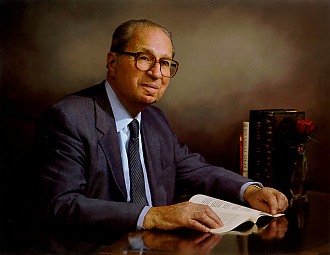
Dr. Mortimer J. Adler
In 1983, Dr. Adler, who had been a lifelong student of Plato, Aristotle and St. Thomas Aquinas (and a member of the American Catholic Philosophical Assiociation), formally converted to Christianity, specifically to the denomination of his wife, who was Episcopalian. Sixteen years later, in December, 1999 in San Mateo, California where he lived and shortly thereafter passed away (d. June 28th, 2001), he was formally received into the Catholic Church by His Excellency, Bishop Pierre DuMaine, of San Jose, CA, who was a long-time friend and admirer of Dr. Adler.
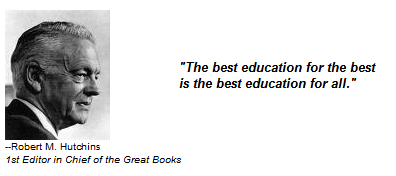 By Robert M. Hutchins
By Robert M. Hutchins
The tradition of the West is embodied in the Great Conversation that began in the dawn of history and that continues to the present day. Whatever the merits of other civilizations in other respects, no civilization is like that of the West in this respect. No other civilization can claim that its defining characteristic is a dialogue of this sort. No dialogue in any other civilization can compare with that of the West in the number of great works of the mind that have contributed to this dialogue. The goal toward which Western society moves is the Civilization of the Dialogue. The spirit of Western civilization is the spirit of inquiry. Its dominant element is the Logos. Nothing is to remain undiscussed. Everybody is to speak his mind. No proposition is to be left unexamined. The exchange of ideas is held to be the path to the realization of the potentialities of the race.
At a time when the West is most often represented by its friends as the source of that technology for which the whole world yearns and by its enemies as the fountainhead of selfishness and greed, it is worth remarking that, though both elements can be found in the great conversation, the Western ideal is not one or the other strand in the conversation, but the conversation itself. It would be and exaggeration to say that Western civilization means these books. The exaggeration would lie in the omission of the plastic arts and music, which have quite as important a part in Western civilization as the great productions included in this set. But to the extent to which books can present the idea of a civilization, the idea of Western civilization is here presented
[in the Great Books].
 These books are the means of understanding our society and ourselves. They contain the great ideas that dominate us without our knowing it. There is no comparable repository of our tradition. To put an end to the spirit of inquiry that has characterized the West it is not necessary to burn the books. All we have to do is to leave them unread for a few generations. On the other hand, the revival of interest in these books from time to time throughout history has provided the West with new drive and creativeness. Great Books have salvaged, preserved, and transmitted the tradition on many occasions similar to our own.
These books are the means of understanding our society and ourselves. They contain the great ideas that dominate us without our knowing it. There is no comparable repository of our tradition. To put an end to the spirit of inquiry that has characterized the West it is not necessary to burn the books. All we have to do is to leave them unread for a few generations. On the other hand, the revival of interest in these books from time to time throughout history has provided the West with new drive and creativeness. Great Books have salvaged, preserved, and transmitted the tradition on many occasions similar to our own.
The books contain not merely the tradition, but also the great exponents of the tradition. Their writings are models of the fine and liberal arts. They hold before us what Whitehead called “‘the habitual vision of greatness.” These books have endured because men in every era have been lifted beyond themselves by the inspiration of their example, Sir Richard Livingstone said: “We are tied down, all our days and for the greater part of our days, to the commonplace. That is where contact with great thinkers, great literature helps. In their company we are still in the ordinary world, but it is the ordinary world transfigured and seen through the eyes of wisdom and genius. And some of their vision becomes our own.”
Until very recently these books have been central in education in the West. They were the principal instrument of liberal education, the education that men acquired as an end in itself, for no other purpose than that it would help them to be men, to lead human lives, and better lives than they would otherwise be able to lead.
The aim of liberal education is human excellence, both private and public (for man is a political animal). Its object is the excellence of man as man and man as citizen. It regards man as an end, not as a means; and it regards the ends of life, and not the means to it. For this reason it is the education of free men. Other types of education or training treat men as means to some other end, or are at best concerned with the means of life, with earning a living, and not with its ends.
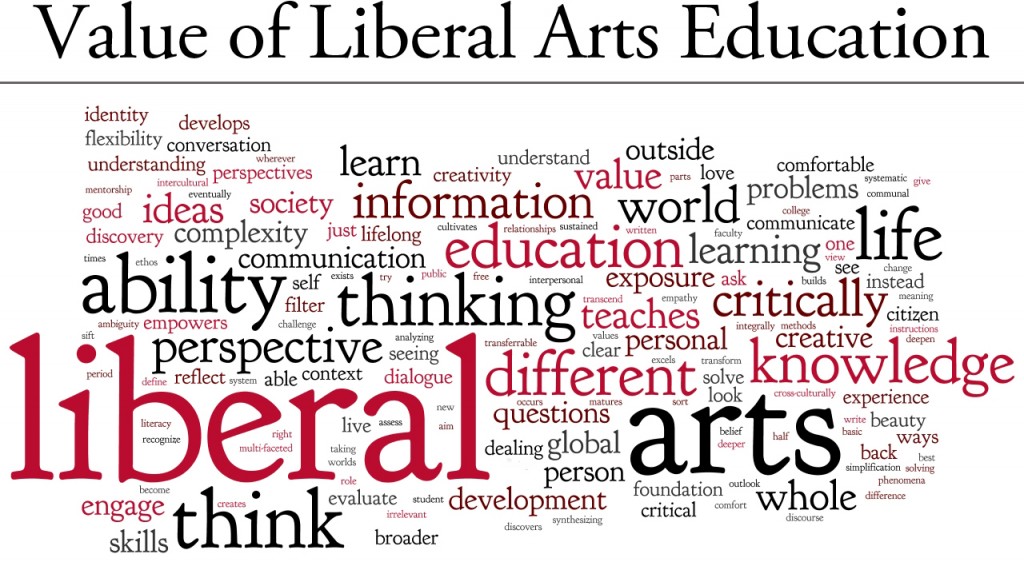
Liberal education seeks to clarify the basic problems and to understand the way in which one problem bears upon another. It strives for a grasp of the methods by which solutions can be reached and the formulation of standards for testing solutions proposed. The liberally educated man understands, for example, the relation between the problem of the immortality of the soul and the problem of the best form of government; he understands that the one problem cannot be solved by the same method as the other, and that the test that he will have to bring to bear upon solutions proposed differs from one problem to the other.
The liberally educated man understands, by understanding the distinctions and interrelations of the basic fields of subject matter, the differences and connections between poetry and history, science and philosophy, theoretical and practical science; he understands that the same methods cannot be applied in all these fields; he knows the methods appropriate to each.
The liberally educated man comprehends the ideas that are relevant to the basic problems and that operate in the basic fields of subject matter. He knows what is meant by soul. State, God, beauty, and by the other terms that are basic to the insights that these ideas, singly or in combination, provide concerning human experience.
The liberally educated man has a mind that can operate well in all fields. He may be a specialist in one field. But he can understand anything important that is said in any field and can see and use the light that it shed upon his own. The liberally educated man is at home in the world of ideas and in the world or practical affairs, too, because he understands the relation of the two. He may not be at home in the world of practical affairs in the sense of liking the life he finds about him; but he will be at home in that world in the sense that he understands it. He may even derive from his liberal education some conception of the difference between a bad world and a good one and some notion of the ways in which one might be turned onto the other.
 The method of liberal education is the liberal arts, and the result of liberal education is discipline in those arts. The liberal artist learns to read, write, speak, listen, understand, and think. He learns to reckon, measure, and manipulate matter, quantity, and motion in order to predict, produce, and exchange. As we live in the tradition, whether we know it or not, so we are all liberal artists, whether we know it or not. We all practice the liberal arts, well or badly, all the time every day. As we should understand the tradition as well as we can in order to understand ourselves, so we should be as good liberal artists as we can in order to become as fully human as we can.
The method of liberal education is the liberal arts, and the result of liberal education is discipline in those arts. The liberal artist learns to read, write, speak, listen, understand, and think. He learns to reckon, measure, and manipulate matter, quantity, and motion in order to predict, produce, and exchange. As we live in the tradition, whether we know it or not, so we are all liberal artists, whether we know it or not. We all practice the liberal arts, well or badly, all the time every day. As we should understand the tradition as well as we can in order to understand ourselves, so we should be as good liberal artists as we can in order to become as fully human as we can.
The liberal arts are not merely indispensable; they are unavoidable, Nobody can decide for himself whether he is going to be a human being. The only question open to him is whether he will be an ignorant, undeveloped one or one who has sought to reach the highest point he is capable of attaining. The question, in short, is whether he will be a poor liberal artist or a good one.
The tradition of the West in education is the tradition of the liberal arts. Until very recently nobody took seriously the suggestion that there could be any other ideal. The educational ideas of John Locke, for example, which were directed to the preparation of the pupil to fit conveniently into the social and economic environment in which he found himself, made no impression on Locke’s contemporaries. And so it will be found that other voices raised in criticism of liberal education fell upon deaf ears until about a half-century ago.
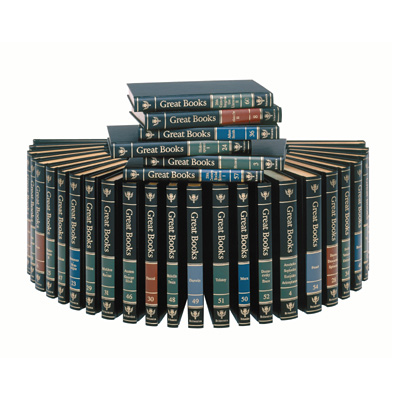 This Western devotion to the liberal arts and liberal education must have been largely responsible for the emergence of democracy as an ideal. The democratic ideal is equal opportunity for full human development, and, since the liberal arts are the basic means of such development, devotion to democracy naturally results from devotion to them. On the other hand, if acquisition of the liberal arts is an intrinsic part of human dignity, then the democratic ideal demands that we should strive to see to it that all have the opportunity to attain to the fullest measure of the liberal arts that is possible to each.
This Western devotion to the liberal arts and liberal education must have been largely responsible for the emergence of democracy as an ideal. The democratic ideal is equal opportunity for full human development, and, since the liberal arts are the basic means of such development, devotion to democracy naturally results from devotion to them. On the other hand, if acquisition of the liberal arts is an intrinsic part of human dignity, then the democratic ideal demands that we should strive to see to it that all have the opportunity to attain to the fullest measure of the liberal arts that is possible to each.
The present crisis in the world has been precipitated by the vision of the range of practical and productive art offered by the West. All over the world men are on the move, expressing their determination to share in the technology in which the West has excelled. This movement is one of the most spectacular in history, and everybody is agreed upon one thing about it: we do not know how to deal with it. It would be tragic if in our preoccupation with the crisis we failed to hold up as a thing of value for all the world, even as that which might show us a way in which to deal with the crisis, our vision of the best that the West has to offer. That vision is the range of the liberal arts and liberal education. Our determination about the distribution of the fullest measure of these arts and this education will measure our loyalty to the best in our own past and our total service to the future of the world.
The great books were written by the greatest liberal artists. They exhibit the range of the liberal arts. The authors were also the greatest teachers. They taught one another. They taught all previous generations, up to a few years ago. The question is whether they can teach us.
“To be always seeking after the useful,” said Aristotle, “does not become free and exalted souls.”
In the spring of this year, education in our country was set into chaos. Teachers and administrators scrambled to find ways of delivering instruction in a remote setting. The fall rolled around, and the educational process had been revolutionized. With less class time for students, many teachers have pared down on their class material to “just the essentials.”
This, then, would be a good time to question what those essentials are. When it comes to the education of our children, what is most necessary? What is the real purpose and goal of education? It is always necessary to keep the goal of any activity in mind, especially an activity as important as education, but it is even more necessary in a time of upheaval.
Since I am a student of philosophy, I like to bother my students with deep questions that they don’t want to think about (some of these conversations are recorded in my book Philosophy Fridays). One of those questions, which I bring up a few times throughout the year, is this: why go to school? Students answer with the typical replies: to get good grades, to get into a good college, to get a good job, to make money, and so on. Basically, school is useful for getting along in life.
This is known as the utilitarian view of education, and they have been well-schooled in it. Students learn skills that will prepare them to fulfill some useful function in society. The job of a school is to fashion a gear for the machine of the economy.
One of the highlights of this year for me has been moderating Great Books discussions for the Angelicum Academy, and at the start of our first discussion (on Hesiod and Aeschylus, if you are interested), Steve Bertucci, the program’s director, offered a view of education that differs vastly from the technical view of our current society: the goal of education is to learn to love the things we ought to love. He cited Socrates.
Desmond Lee translates a passage of the Republic (Book III, 403c) this way: “The object of education is to teach us to love what is beautiful.” We ought to love what is truly beautiful, and we ought to love most what is most beautiful. Far from learning skills for work, education should be primarily about love and beauty.
Christopher Scott Sevier, in his book Aquinas and Beauty, comments, “What we love says a great deal about our character.” Education, then, is a formation of our character so that the beauty of what is beautiful can find a home in the beauty of a virtuous soul. Education is “training in virtue.” The development of right love is the development of the person as a whole. Well-ordered affection takes time and effort and ought to be the main thing in education.
Aristotle warned us, more than 2000 years ago, against the utilitarian view of education: “To be always seeking after the useful does not become free and exalted souls.” Who would not want the children of their world to become free and exalted in soul?
Again, Aristotle writes, “There is a sort of education in which parents should train their sons, not as being useful or necessary, but because it is liberal or noble.” The utilitarian view of education aims at developing useful humans. The educational view of Plato and Aristotle (and others) aims at developing excellent humans. Good skills are incidental to the human person. Being a good human is essential to the human person. As beings with free will, we participate in our own becoming. What we become depends on what we think, say and do.
One of the many quotes on my classroom wall reads: “One of the great problems of our time is that many are schooled, but few are educated.” That was written by St. Thomas More in the 16th century. I wonder what he would have to say about our schools now.
Epictetus said, “Only the educated are free.” For all our schooling, we are not free and exalted in soul. Only the virtuous are free. Only those who can love what they ought to love are free. Only those with well-ordered affection are free. Only those who can be pierced by what is truly beautiful are free, because Beauty is Truth, and “The truth will set you free.”
If education is being re-invented, it ought to be founded on solid principles. The essential thing about education is its purpose, and an education that loses its true purpose may turn out to be no education at all.
Matt D’Antuono is a physics teacher in New Jersey, where he lives with his wife and eight children. He holds bachelor’s degrees in physics and philosophy, a master’s degree in special education, and is working on a master’s degree in philosophy at Holy Apostles in Cromwell, Connecticut. He returned to the Catholic Church in 2008. He is the author of A Fool’s Errand: A Brief, Informal Introduction to Philosophy for Young Catholics, The Wiseguy and the Fool and Philosophy Fridays. On YouTube you can find him at DonecRequiescat and his family at MisterD418.
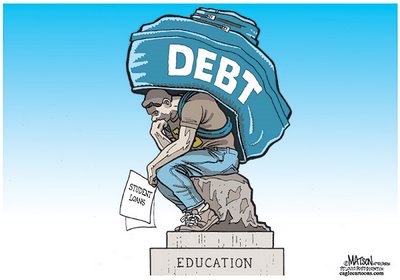 A Broader View
A Broader View
SUMMARY:
American Catholic families increasingly cannot afford Catholic higher education.
Private college, including room and board, cost an avg. of $1,187 per credit hour.
Great Books Program credits cost only $250 per hour for the first 48 hours of college credit;
The remaining Great Books Program college credits cost from as little as $250, depending upon the participating college selected.
The Great Books Program helps make Catholic higher education affordable.
Most Catholic parents hope to avoid sending their children to public, secular colleges with the attendant dangers to faith and morals so prevalent there. They hope to send their children to private four-year colleges for a sound, Catholic education. But that is increasingly unaffordable for families.
 College tuition is typically based on a per-credit-hour basis, plus some minor fees (e.g., application fee). A credit hour is an “hour” (50 minutes) of class per week, for 14-16 weeks (a semester). The standard minimum number of hours for a bachelor’s degree in most US colleges and universities is completion of 120 hours, typically completed at the rate of 15 per semester, 30 per year for four years. Many foreign colleges and some US ones have 90 credit hour bachelor’s degrees, which typically require three years to complete. The cost-per-credit-hour therefore becomes central to calculating college tuition at most colleges, though a minority of colleges simply have a semester charge for a fixed curriculum.
College tuition is typically based on a per-credit-hour basis, plus some minor fees (e.g., application fee). A credit hour is an “hour” (50 minutes) of class per week, for 14-16 weeks (a semester). The standard minimum number of hours for a bachelor’s degree in most US colleges and universities is completion of 120 hours, typically completed at the rate of 15 per semester, 30 per year for four years. Many foreign colleges and some US ones have 90 credit hour bachelor’s degrees, which typically require three years to complete. The cost-per-credit-hour therefore becomes central to calculating college tuition at most colleges, though a minority of colleges simply have a semester charge for a fixed curriculum.
$ 142,544 – AVG. FOUR YEAR COLLEGE COSTS. 2009-2010 tuition and fee costs for private, four-year colleges increased on average 4.4% or $1,096 per year from the prior year to a whopping $26,273 per year (up 47% since 2002 when it was $18,596) or over $105,092 for four years; at the same time average college room and board costs climbed 4.2% or $377 per year to $ 9,363. That totals to an average of over $35,636 per year or $142,544 for a four-year degree (Ivy League colleges hover about $50,000 per year – $200,00 for four years
[i]; Notre Dame is $48,850[ii] per year) absent any scholarships.[iii]
$ 1,187 PER CREDIT HOUR. Calculating the same average on a per hour basis, using the standard minimum of 120 hours for a bachelor’s degree, with room and board added in, the total cost is $1,187 per credit hour ($1,666 for the higher end colleges).
$ 250 PER CREDIT HOUR IN Great Books Program. The Great Books Program cost per credit hour is $250 for the first 48 hours ($12,000 total) of the program. The remaining hours vary from $250 (online courses) up to $600 (c. $912 including room and board, at Benedictine College).
Great Books Program BACHELOR’S DEGREES FROM $28,088. Eight bachelor’s degrees in the Great Books Program can be obtained for under $32,000.[iv] Another 31 Great Books Program bachelor’s degrees may be completed at residential colleges for a range from $28,088 (Campion Australia, including tuition, fees, room and board[v]), to $93,722 (Benedictine College, including tuition, fees, room and board) [iii] utilizing three annual 5% reenrollment discounts with the Angelicum Great Books Program), and absent any scholarships.
TEXTBOOKS REACH $1,000 PER YEAR. Add another $4,000 to tuition and fees at most colleges since the typical college student also pays another $1,000 per year on textbooks.[vi] Here are some pricey examples:
Acta Philosophorum The First Journal of Philosophy: $1,450
Encyclopedia of International Media and Communications: $1,215
Management Science An Anthology: $850 
History of Early Film: $740
Biostatistical Genetics and Genetic Epidemiology: $665
Companion Encyclopedia of Psychology: $600
Feminism and Politics: $600
Concepts and Design of Chemical Reactors: $593
Advanced Semiconductor and Organic Nano-Techniques: $570
Ethics in Business and Economics: $550
Great Books Program BOOKS ARE UNDER $300 PER YEAR. By contrast, the Ignatius Critical Edition books used in the Great Books Program Angelicum Great Books Program cost approximately $11-13 each or roughly $300 per year. Our Great Books Study Guides are presently included in the price of the tuition. Since Ignatius does not have all of the books used in their Critical Editions yet, the current cost is under $300 per year (in fact, 80% of the four-years of readings are contained in Britannica’s Great Books of the Western World, a set which can be obtained new for $989 or used for much less).
CAN THE AVERAGE AMERICAN AFFORD PRIVATE COLLEGE ANY LONGER?
 While college costs have continued to climb through the roof, average hourly earnings of Americans ($18.98 per hour) have declined in purchasing power to about ½ what they were in the 1970s, after adjusting for inflation. From January 2007 to 2009, 5.1 million jobs were lost; 13.7 million people were out of work and 32.2 million people were on welfare (food stamps). Many retirement plans are all but worthless. $9.7 trillion was spent on bank bailouts for a very few of the largest banks. An astonishing number of homes – 19 million – stand vacant. U.S. debt is approximately $12.3 trillion + $6.3 trillion Fannie Mae/Freddie Mac debt assumed by the US government = $ 18.6 trillion dollars. This vast sum does not include the federal government’s un-funded contingent liabilities such as Social Security/Medicare/Medicaid estimated at $107 trillion. State and local governments owe another $2.4 trillion. All of this will, of course, have to be paid on the backs of the already overburdened US taxpayer. The American middle class is now an endangered species.
While college costs have continued to climb through the roof, average hourly earnings of Americans ($18.98 per hour) have declined in purchasing power to about ½ what they were in the 1970s, after adjusting for inflation. From January 2007 to 2009, 5.1 million jobs were lost; 13.7 million people were out of work and 32.2 million people were on welfare (food stamps). Many retirement plans are all but worthless. $9.7 trillion was spent on bank bailouts for a very few of the largest banks. An astonishing number of homes – 19 million – stand vacant. U.S. debt is approximately $12.3 trillion + $6.3 trillion Fannie Mae/Freddie Mac debt assumed by the US government = $ 18.6 trillion dollars. This vast sum does not include the federal government’s un-funded contingent liabilities such as Social Security/Medicare/Medicaid estimated at $107 trillion. State and local governments owe another $2.4 trillion. All of this will, of course, have to be paid on the backs of the already overburdened US taxpayer. The American middle class is now an endangered species.
During the 1970s it was possible for American college students to pay their own tuition by working part time, without student loans or any help from their parents. Besides paying their own tuition, many students in the 1970s could also afford their own car and apartment. Today, college students have to get deeply into debt and have their parents help pay their tuition; students can barely afford to pay for food on their own.
One result is that parents and students increasing hope for scholarships, grants and especially student loans to make that more affordable. Beside these being uncertain and hence difficult to use in planning, there is a serious downside to student loans – sometimes crushing debt.
Consumer debt in the US stands at nearly $2.5 trillion dollars – and based on the latest Census statistics, that works out to be nearly $8,100 in debt for every man, woman and child that lives here in the US. We’re talking about consumer credit – which does not include debt secured by real estate. 36% is credit card debt (credit card delinquencies were at the third highest level on record);[vii] 64% is derived from loans that are not revolving in nature. This type of debt would include car loans and student loans. So if you’re thinking that number has mortgage debt in it, it doesn’t. The typical homeowner spends around 17% of their disposable income just to own their homes and cars. Renters outpace homeowners by over 8% and spend nearly 25% of their income on these same types of debts. Nearly one in every 35 households in the United States filed for bankruptcy in 2007 alone.
The Project on Student Debt, a research and advocacy organization in Oakland, Calif., used federal data to estimate that 206,000 people graduated from college with more than $40,000 in student loan debt – that’s a ninefold increase over the number of people in 1996, using 2008 dollars. Furthermore, on top of student loans most students have credit card debt they amassed from paying living expenses – $3,200 on average.
One survey of college graduates revealed an overwhelming number of respondents that were sidetracked from graduate or post-graduate study due primarily to existing student loan debt.[viii] Does this mean that if we were not faced with the mountain of student loan bills that we would be a more well-educated society? Of course, with many more well-educated Catholics.
The university and college tuition loan-finance system can now fairly be described as a continuous debt-generating apparatus. Students enter into college or university under the premise that once they receive their degree they will find high-paying jobs, enabling them not only to pay back their tuition debt along with other fees but be able, at the same time, to live a comfortable existence. Most recent graduates will tell you that nothing could be further from the truth.
Many entry-level wages for formerly “high-paying,” post-graduate positions were slashed – if those jobs did not disappear altogether. After their graduation, and with the onset of severe recession, more and more students have found themselves having to accept low-paying jobs in places like coffee shops or the retail industry just to cover their daily expenses.
For example, Cortney Munna, a 26-year-old graduate of New York University, has nearly $100,000 in student loan debt from her four years in college. Like many middle-class families, Cortney and her mother began the college selection process with a grim determination. They would do whatever they could to get Cortney into the best possible college, and they maintained a blind faith that the investment would be worth it.
Today, however, Ms. Munna, a 26-year-old graduate of New York University has nearly $100,000 in student loan debt from her four years in college, and affording the full monthly payments would be a struggle. Universities like N.Y.U. enrolled students without asking many questions about whether they could afford a $50,000 annual tuition bill. Then the colleges introduced the students to lenders who underwrote big loans without any idea of what the students might earn someday — just like the mortgage lenders who didn’t ask borrowers to verify their incomes.
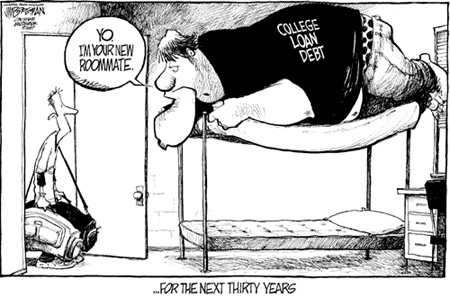 Meanwhile Ms. Munna does not want to walk away from her loans in the same way many mortgage holders are. It would be difficult in any event because federal bankruptcy law makes it nearly impossible to discharge student loan debt. It is utterly depressing that there are so many people like her facing decades of payments, limited capacity to buy a home and a debt burden that can repel potential spouses.
Meanwhile Ms. Munna does not want to walk away from her loans in the same way many mortgage holders are. It would be difficult in any event because federal bankruptcy law makes it nearly impossible to discharge student loan debt. It is utterly depressing that there are so many people like her facing decades of payments, limited capacity to buy a home and a debt burden that can repel potential spouses.
How could her mother have let her run up that debt? “All I could see was college, and a good college and how proud I was of her,” her mother said. “All we needed to do was get this education and get the good job. This is the thing that eats away at me, the naïveté on my part.”
Cortney recently received a raise and now makes $22 an hour working for a photographer. It’s the highest salary she’s earned since graduating with an interdisciplinary degree in religious and women’s studies. After taxes, she takes home about $2,300 a month. Rent runs $750, and the full monthly payments on her student loans would be about $700.
She may finally be earning enough to barely scrape by while still making the payments for the first time since she graduated, at least until interest rates rise and the payments on her loans with variable rates spiral up. “I don’t want to spend the rest of my life slaving away to pay for an education I got for four years and would happily give it back,” she said. “It feels wrong to me.” [ix]
WILL THE OBAMA STUDENT LOAN REFORMS MAKE A DIFFERENCE?
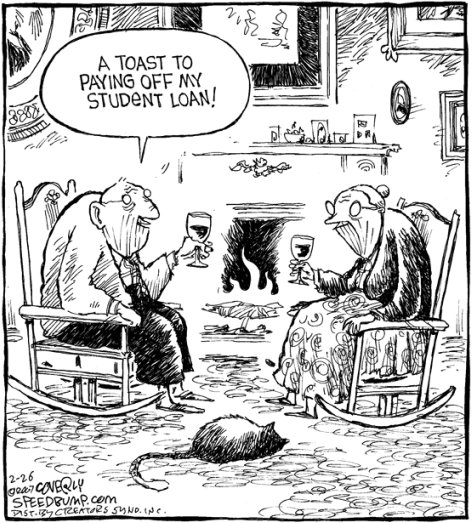 In July, 2010 the US Government will take over a majority of issued student loans stemming from private banks and corporate-loan companies. Newly signed loans will have a capped 3.4 percent interest rate. The loans that already exist will not be affected by this cap, which means millions of students will still have to pay back their current loans with interest rates that can easily reach 10 percent or more. New repayment terms will come into existence for loans signed only after 2014. The current repayment cap of 15 percent of disposable income will be lowered to 10 percent. Furthermore, the government can forgive some borrowers’ debts after 20 years whereas now lenders can forgive student-loan debt only after 25 years. Public servants, i.e., nurses, soldiers, and teachers, could see more relief. Their debt can be forgiven after only 10 years, and they can get assistance of up to $4,000 for tuition. In addition, a portion of their loans can be forgiven if they make less than $65,000 per annum.
In July, 2010 the US Government will take over a majority of issued student loans stemming from private banks and corporate-loan companies. Newly signed loans will have a capped 3.4 percent interest rate. The loans that already exist will not be affected by this cap, which means millions of students will still have to pay back their current loans with interest rates that can easily reach 10 percent or more. New repayment terms will come into existence for loans signed only after 2014. The current repayment cap of 15 percent of disposable income will be lowered to 10 percent. Furthermore, the government can forgive some borrowers’ debts after 20 years whereas now lenders can forgive student-loan debt only after 25 years. Public servants, i.e., nurses, soldiers, and teachers, could see more relief. Their debt can be forgiven after only 10 years, and they can get assistance of up to $4,000 for tuition. In addition, a portion of their loans can be forgiven if they make less than $65,000 per annum.
Another aspect of the student-loan reform is the increasing of Pell Grants for lower-income students. As part of last year’s stimulus package, they were raised, but they would be lowered again once the stimulus money ran out. The amount of Pell Grants is slated to increase approximately $400 to $5,975 by 2017, correlated to fluctuations in the indices of consumer prices.
These changes are very vague and do not really address the central problems most students find themselves in. The estimation of the Consumer Price Index in 2017, for example, is an example of one of the vague features of the bill. Moreover, millions of students remain saddled with incredible amounts of debt. Most of the measures contained in the bill do not consider general inflation, and none of them considers tuition inflation.
All across the country colleges and universities are raising tuition and other fees – year on year. The minuscule increases in the issue of Pell Grants during this time, for example, will be outpaced, unable to keep pace with the massive increases in tuition. Moreover, with the availability of subsidized loans issuing directly from the government, students could potentially end up paying more for tuition, as many universities and colleges would not or could not allow such an opportunity to pass them by of raising tuition.
Students therefore, even after the implementation of Obama’s student-loan “reform” program – have the potential of amassing massive amounts of debt; and this debt gets harder and harder to pay back with the disappearance of high-paying jobs along with jobs in general. Students could realistically end up paying undergraduate and or post-graduate debt decades after achieving a degree. If a student does not have a job or have one that barely allows one to pay rent, food and gas, he or she can find it next to impossible to pay back any loans – no matter the repayment terms. This cannot go on. The system of trading debt-bondage for an education needs serious reform. The government is not the answer.
THOUGH INCREASINGLY UNAFFORDABLE, COLLEGE EDUCATION REMAINS VALUABLE
The above graph shows the median household income in accordance with the householder’s educational attainment – the correlation is very high and significant.
Apart from the critical i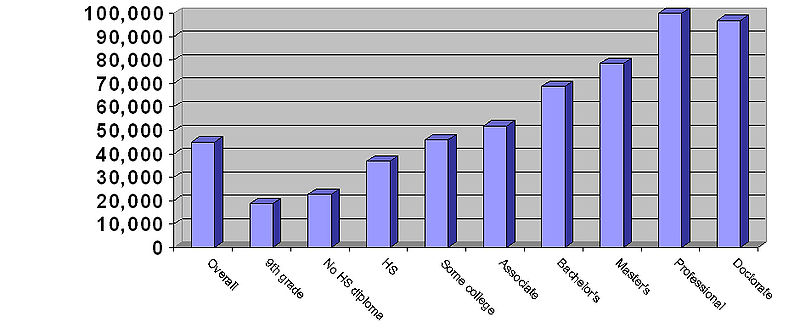 mportance of liberal education as a good in itself, we are left with the apparent dilemma that while a good college education results in dramatically increased income, it is often not worth the level of student loan debt students must incur to obtain it.
mportance of liberal education as a good in itself, we are left with the apparent dilemma that while a good college education results in dramatically increased income, it is often not worth the level of student loan debt students must incur to obtain it.
This explains one of the principal goals and benefits of the Good Books Program – to reduce the cost of Catholic higher education thereby making it available to more Catholic families and students, and to others, who either cannot afford it or who wish to avoid the crushing debt that increasingly accompanies it.
[i] Top 10 US News & World Report, Aug 2009
[ii] http://colleges.usnews.rankingsandreviews.com/college/liberal-arts-search
[iii] 2009-10 College Prices (College Board)
[iv] The 2009-10 academic year figures were slightly lower. Due to price increases at some participating colleges the figure is now slightly higher. However, taking advantage of tuition discounts can still keep the cost below $29,000, or even less for families. Prices subject to exchange rates fluctuations and other changes without notice.
[v] Room and board costs at Campion College Australia range from $100 AUD to $325 AUD per week for 17 weeks. In US$ that comes to $84-$273 per week at current rates, or $ 1,428-$4,641 per semester. The figure above uses the lower sum.
[vi]12 Most Expensive College Textbooks in America, By Lynn O’Shaughnessy , May 10, 2010
[vii] Consumer Debt Statistics by Erin Peterson, Bankrate.com
[viii] Project on Student Debt, a research and advocacy organization in Oakland, California Your Money, by Ron Lieber who writes the Your Money column, which appears in The NY Times on Saturdays.
Our Great Books students were very fortunate this past semester (2018) to have Fr. Fessio as a moderator for some of their classes!
“This was a very informative and inspiring
[Angelicum Great Books class on Brothers Karamotsov]. I hope you keep doing this kind of work. It is going to form you people to be very solid citizens of both the earthly and heavenly kingdoms. God bless you all.” – Fr. Joseph Fessio, SJ, Th.D.“This particular [Angelicum Great Books class on Leviathan] session has been brilliant. It should be recorded and used in advertising for the program. The comments are excellent, well articulated – I’m sorry to praise you; I don’t want you people to lose humility. Well, you won’t lose humility if you read great books because you’ll realize how small you are in comparison to these giants we are reading.”- Fr. Joseph Fessio, SJ, Th.D.

Overview of the Great Books Program
The Great Books Program consists of eight semesters (four years) of online classes meeting 2 hours per week, September-May, discussing the reading from one of the great classics of Western civilization – Great Books – done that week. Students do the weekly Great Books reading and meet for a two-hour weekly discussion with two highly experienced moderators very familiar with the readings, and up to 22 students online (average is about 18), including some from various States and often from various countries. Two 900-1000 word (or 1800-2000 in the college tracks) essays are required each semester. Students have a month to do each, and may redo to improve them – as many times as they wish – for a higher grade. Students take an online oral exam online at the end of each semester.
The classes are conducted in a conversational, or Socratic, format. Our method of teaching by conversationally discussing questions and answers in a spirit of mutual inquiry and discovery dates back to Socrates and is at the heart of the Great Books and classical traditions. It leads students to develop and practice the liberal arts of listening, speaking, reading and writing as well as the habits of reflective, critical thinking. In this environment students begin to develop their thoughts and insights with care and confidence and learn how to express those ideas in the naturally delightful and liberating experience of genuine learning. In this way students gain understanding of their own natures and the nature of the world in which we all live. This makes for a better, examined and thoughtful life, a point on which all the sages who wrote the great books agree. Visitors are welcome to attend the classes to experience them. We have some audio samples of the classes posted online.
There are two modes to enroll and be in the classes: either for high-school-level credit, or for college-level credit (which also includes high school credit). We refer to these two modes of participation and enrollment as the high-school-track and the college-track. College track students may earn up to 60 college credits, which is typically ½ of a bachelor’s degree, where the credits are received for transfer.
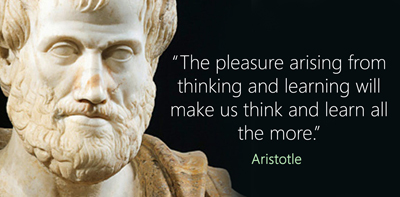 The college-track may also be taken as part of the Associate’s degree (or “AA”) track, in which students also take five online courses from Holy Apostles College during their 11th and/or 12th grade years. Combined with the Great Books courses, this enables them to earn 60 college credits by the completion of their 12th grade, and an accredited Associate’s degree (in the Liberal Arts) from Holy Apostles College. If they take our four Theology Online courses they may earn up to 75 college credits (of the 120 needed for a Bachelor’s degree), and have the option of receiving an Associate’s degree in Theology, again, by the conclusion of 12th grade. If this is of interest please visit the “Degree Programs” tab.
The college-track may also be taken as part of the Associate’s degree (or “AA”) track, in which students also take five online courses from Holy Apostles College during their 11th and/or 12th grade years. Combined with the Great Books courses, this enables them to earn 60 college credits by the completion of their 12th grade, and an accredited Associate’s degree (in the Liberal Arts) from Holy Apostles College. If they take our four Theology Online courses they may earn up to 75 college credits (of the 120 needed for a Bachelor’s degree), and have the option of receiving an Associate’s degree in Theology, again, by the conclusion of 12th grade. If this is of interest please visit the “Degree Programs” tab.
With 75 credits earned, only another 45 are needed for an accredited bachelor’s degree. These may be earned in as little as three semesters-one year (taking 15 credits each in the Summer, Fall, and Spring terms at Holy Apostles, on-campus or online). Full details are available under the Associate’s degree FAQ tab.
In addition to the study described above, college-track students must submit weekly, written answers – mostly of the short answer-type (a few sentences to a paragraph or two) – to the Great Books Study Guide questions which accompany each reading. There are 10-20 such questions each week.
Two 1800-2000 word essays per semester are required of college track students. These are graded for content as well as for English language arts, including grammar, syntax, spelling, vocabulary and style. These essays together constitute ten percent (25%) of the semester grade. All students take an oral exam online at the end of each semester. The weekly grading, the coordination with colleges, more involved assessment and so on, make the college-track tuition considerably more than the high-school-track. Students in the classes are generally unaware which students are doing it on the high-school-track, and which on the college-track, as it makes no difference in the online classes where they come into contact.
Students must be at least 14 years of age (or 9th grade) to enroll in the Great Books Program. There is no upper age limit. We often have college students and adults in classes, though the great majority begin at age 14 or so. The experienced moderators and the magnificent quality of the books read and discussed –which Dr. Adler called the “backbone of a liberal education – invariably elevate the conversation and enlighten the intellects of participants. The specific readings selected are arranged chronologically beginning around Homer’s Illiad about ancient Greece (1st year), and continue through ancient Rome (2nd year), the Middle Ages (3rd year), and conclude in our time (Modern or 4th year). This is typical of Great Books programs at colleges and universities.
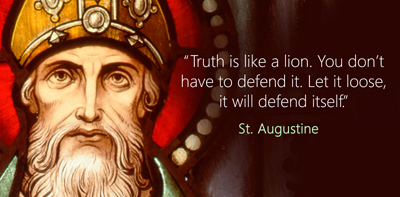 We have been doing this since our founding in 2000 A.D. We have had thousands of students, in about 40 countries, many of whom have graduated and attend or graduated from numerous colleges and universities. Our program was successfully reviewed by the American Council on Education (ACE) which recommended it for 48 hours of college level credit. The American Council on Education’s College Credit Recommendation Service (ACE CREDIT) twice evaluated and recommended college credit for 8 courses (totaling 48 credit hours – 6 per semester) of our Great Books Program. The American Council on Education, the major coordinating body for all the nation’s higher education institutions, seeks to provide leadership and a unifying voice on key higher education issues and to influence public policy through advocacy, research, and program initiatives. For more than 30 years, colleges and universities have trusted ACE CREDIT to provide reliable course equivalency information to facilitate their decisions to award academic credit.
We have been doing this since our founding in 2000 A.D. We have had thousands of students, in about 40 countries, many of whom have graduated and attend or graduated from numerous colleges and universities. Our program was successfully reviewed by the American Council on Education (ACE) which recommended it for 48 hours of college level credit. The American Council on Education’s College Credit Recommendation Service (ACE CREDIT) twice evaluated and recommended college credit for 8 courses (totaling 48 credit hours – 6 per semester) of our Great Books Program. The American Council on Education, the major coordinating body for all the nation’s higher education institutions, seeks to provide leadership and a unifying voice on key higher education issues and to influence public policy through advocacy, research, and program initiatives. For more than 30 years, colleges and universities have trusted ACE CREDIT to provide reliable course equivalency information to facilitate their decisions to award academic credit.

“Mr. B” (as he is known by our students), one of our Great Books Moderators
The Great Books Program is a purely distance education program with only minimal technical support needed to assist its professors who moderate our weekly, online, live classes (i.e., not recorded, no delayed “chat” rooms) from their homes or offices around the country. This dramatically reduces costs thus enabling more students to attend and complete these high school/college level Great Books courses who would otherwise not be able to do so. While we have video capability, we rarely use it, in preference for the much less-distracting live-audio only, with various images posted (such as photos, maps, verse, texts, etc.).
The Great Books Program students do not need to be enrolled in the Angelicum Academy, nor to have come from the Angelicum homeschool program, nor to have had any of the 3-8th grade Socratic classes. The Great Books Program is operated independently of these, though they were designed to dovetail. Most of our students have not come from the Angelicum Academy – they come from many programs, from charter schools, from public or private schools, and from homes not using any formal homeschool program. Over the years some schools have adopted all or parts of our curriculum. The curriculum for the Angelicum Academy homeschool program orients students towards the Great Books program, in various ways, and we obviously recommend it, but it is not a necessary prerequisite for the study of the Great Books.
Our new, online, Greats Honors Program for students in the 9th-12th grades, is a perfect complement to the Great Books Program, and in fact envisions the same students taking both the Great Books courses and the Great Courses together in one, integrated curriculum-The Greats Honors Program- and was designed for that very purpose: to provide the very finest, online educational experience possible.

Dr. Redpath and Mr. Bertucci in Poland
Many years ago – from the Middle Ages to modern times – the Bachelor of Arts (BA) degree signified completion of the secondary level of education (following the elementary or primary level) and so readiness to enter into the third level of formal education – the university, for specialization in one’s chosen field. With that background in mind, Dr. Mortimer J. Adler wrote:
“If I had any hope that in the foreseeable future, the educational system of this country could be so radically transformed that the basic liberal training would be adequately accomplished in the secondary [i.e., high] schools and that the Bachelor of Arts degree would then be awarded at the termination of such schooling, I would gladly recommend that the college be relieved of any further responsibility for training in the liberal arts… if we are going to have general human schooling in this country, it has to be accomplished in the first twelve years of compulsory schooling…it would be appropriate to award a bachelor of arts degree at the completion of such basic schooling. Doing so would return that degree to its original educational significance as certifying competence in the liberal arts, which are the arts or skills of learning in all fields of subject matter.” – Jacques MaritainJacques Maritain
Philosopher Jacques Maritain held virtually the identical view as Dr. Adler on this matter: “I advance the opinion, incidentally, that, in the general educational scheme, it would be advantageous to hurry the four years of college, so that the period of undergraduate studies would extend from sixteen to nineteen. The BA would be awarded at the end of the college years [at 19 years of age], as crowning the humanities…” (Education at the Crossroads)

Most of the Great Books can be downloaded free to a Kindle!
For example, in colonial America, before entering school at the age of fourteen or fifteen, students were expected to be able to speak Latin, and in college they were fined for not speaking in Latin, except during recreation. Latin was the language of most of their textbooks and lectures. The New Testament Greek was required for admission, and in Greek they also studied Homer and Longinus. In Latin the chief authors were Cicero, Vergil, and Horace. A continued interest in the classics was usual. “Every accomplished gentleman,” says Wertenbaker, “was supposed to know his Homer and his Ovid, and in conversation was put to shame if he failed to recognize a quotation from either.” Self-made men, like Benjamin Franklin, without the benefit of college, derived more from the ancient world than one would expect, but the more typical Founding Fathers meditated long and deeply on the ancient patterns of democracy and republics, and Jefferson was only expressing a frequent view of his time when he said of ancient literature: “The Greeks and Romans have left us the present models which exist of fine composition whether we examine them as works of reason, or style, or fancy… To read the Latin and Greek authors in the original is a sublime luxury.” The history, philosophy, and literature of the ancients did not seem remote or antiquated, but intimately present because permanently enlightening. -Image of America, Prof. Norman Foerster (University of Notre Dame Press, 1957)
In a 1970 appearance on the TV show Firing Line, hosted by William F. Buckley, Jr, Dr. Adler made the same point that liberal education, the backbone of which is study of the Great Books (not student-selected electives), should be completed by the end of secondary (high) school:

Dr. Mortimer J. Adler
Editor- in-Chief of Encyclopedia Britannica and the Great Books of the Western World
I think the curriculum for liberal studies should be completely fixed. There should be no electives at all. I do not think the student is in any position to make choices about what he should study. I do not think his interests make any difference. They are all human beings; they are all going to become citizens; they are all going to have lots of free time. I think electives – the choice of specialization – should come after the liberal arts degree. I think the liberal arts degree is given four years too late. I would take American schooling and cut it down , and make it European in this sense: six years of elementary schooling; six years of secondary (lycee, gymnasium – high school); the collegiate (i.e., the BA [Bachelor of Arts]) degree coming at the end of that [i.e., at the conclusion of secondary education – 12th grade in the US]…I might extend that by taking [into account] the differences in the population: I might have the very brightest twelve years [i.e., through 12th grade] ; for the next level thirteen years; and the last, fourteen years, but not more than fourteen.”
Twenty years later, in 1990 Adler reaffirmed his view that the Great Books – the “ backbone of liberal education” as Adler called them – should be studied in the high school years, before age eighteen: “As far as the United States is concerned, the reorganization of the educational system would make it possible for the system to make its contribution to the liberal education of the young by the time they reached the age of eighteen…The tremendous waste of time in the American educational system must result in part from the fact that there is so much time to waste.” (The Great Conversation by Dr. Mortimer J. Adler; 2nd Ed., 1990, p.55; Encyclopaedia Britannica, Inc., Chicago)
Adler wrote in his autobiography, although younger than the College students, “the high school students did just as well [in the University of Chicago Great Books Program]; in fact, having had less schooling, they were less inhibited in discussion.” I’d say that it was not that we’d had less schooling but that we’d had U-High (high school at the U. of Chicago-run University high school – in other words they were prepared) schooling, which encouraged independent questioning and expression. -George McElroy, (BA’38, MA’39, graduated from U-High in 1934)
Ten years later, taking Dr. Adler’s words and personal encouragement to heart, in 2000 AD we developed The Great Books Program for students high school and college age and up. Much like the AP science courses for which high school students can earn college credits for completing courses of college level content and rigor, The Great Books Program allows willing students to gain a broad, liberal (i.e. from liber or libertas – liberty, or freeing from ignorance) education in the humanities through the study of the great books while in high school or college, via distance education, for college credit.
“Reading the Great Books had done more for my mind than all the rest of the academic pursuits…it is the best education for the faculty as well as for the students; the use of original texts is an antidote for survey courses and fifth-rate textbooks; and it constitutes by itself, if properly conducted, the backbone of a liberal education.” – Dr. Mortimer J. Adler
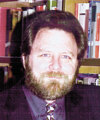
Never before has there been such a great opportunity for parents seeking the best education for their children.” – Norris Archer Harrington
In recent years there has been an increased interest in the great books approach to education. Nowhere is this approach more realized than at schools such as St. John’s College and Thomas Aquinas College. As four year, great books programs, both of these schools focus exclusively on the original texts of the greatest writings in the history of the Western world. After reading these works, students and tutors engage in Socratic discussion groups so as to bring out the rich meaning to be found there.
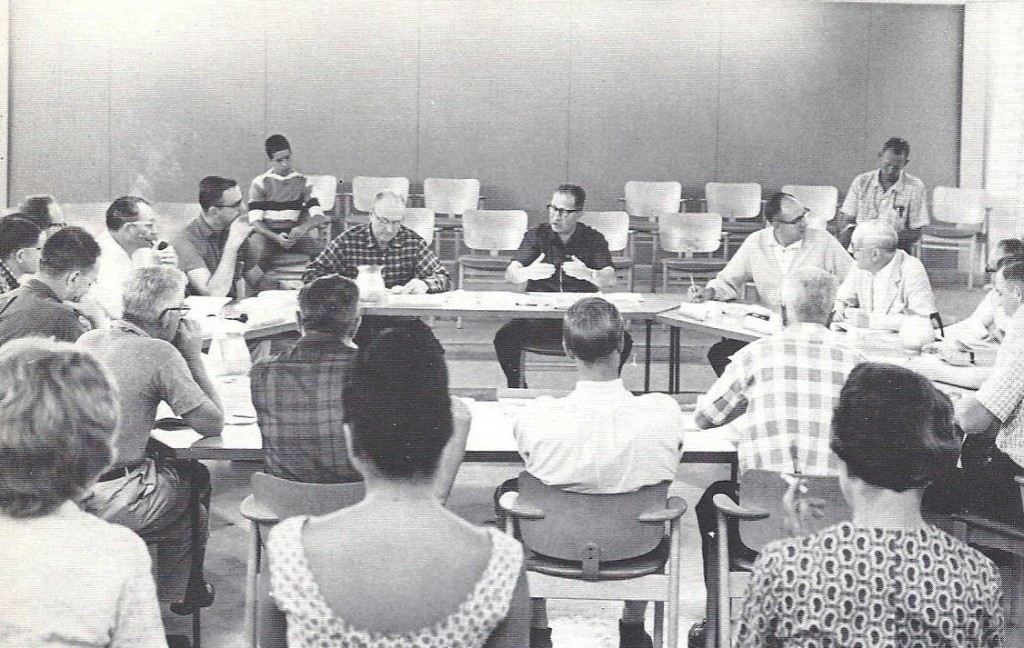
Adler conducting a Socratic seminar in Aspen.
Undoubtedly, there are many parents who desire for their children the traditional and classical education afforded by a great books approach who yet find themselves asking, “Just what is the Socratic Method, why should we use it, how does it work?” It is illustrative that by asking these very questions in order to understand the method, one actually initiates the method itself. To answer requires a brief discussion of Socrates, the Greek philosopher from whom the method takes its name. It is interesting to note that in any listing of great books, Socrates is never one of the authors listed. This is because Socrates never wrote a book. All of the written dialogues of Socrates we have today were written by his student, Plato.
Socrates, despite the contrary claims of his contemporaries, insisted many times that he was not an authority regarding anything. Almost without exception, he held that he was simply trying to understand the essence of whatever issue or question was at that time being discussed. When a seemingly wise man would make a bold proclamation regarding love, virtue, justice, or some other philosophical consideration, Socrates would respond by asking a simple question. When Meno, in the dialogue that bears his name, asks Socrates, “Can virtue be taught?” Socrates asks, “Can you tell me what virtue is?” When Meno replies with a list of answers, Socrates notes that Meno has made something that was one into something that was many; not very illustrative. He asks Meno if there is a single, unified definition of virtue. Thus begins a friendly dialogue (not merely a technique), that discusses not only the essence of virtue in men, but also examines the very nature of knowledge and learning itself.
Thus, the Socratic Method is a conversation, a discussion, wherein two or more people assist one another in finding the answers to difficult questions. Why did Socrates proceed in this manner? Despite his many claims of ignorance Socrates understood better than those with whom he spoke that it was not enough simply to “learn” facts, to memorize lessons, or to parrot lectures. To know truly, to seek wisdom, one must work toward understanding. If the question “what” leads us to see what we do and do not know, then the question “why” leads us to understand our world in a more full and fundamental manner. If a student tells you that the square on the hypotenuse of a right triangle is equal to the squares on the two remaining sides taken together, he would, or course, be correct. But if you ask this student “why” this is so, would he be able to give you that answer? If he cannot, then he has memorized an “answer” that, while possessing certain utility, does not of itself provide understanding of causes. But if he gives any one of a number of reasoned explanations why the right triangle has the property described, then he demonstrates not only his understanding of causes, but also the ability to communicate that understanding to others.
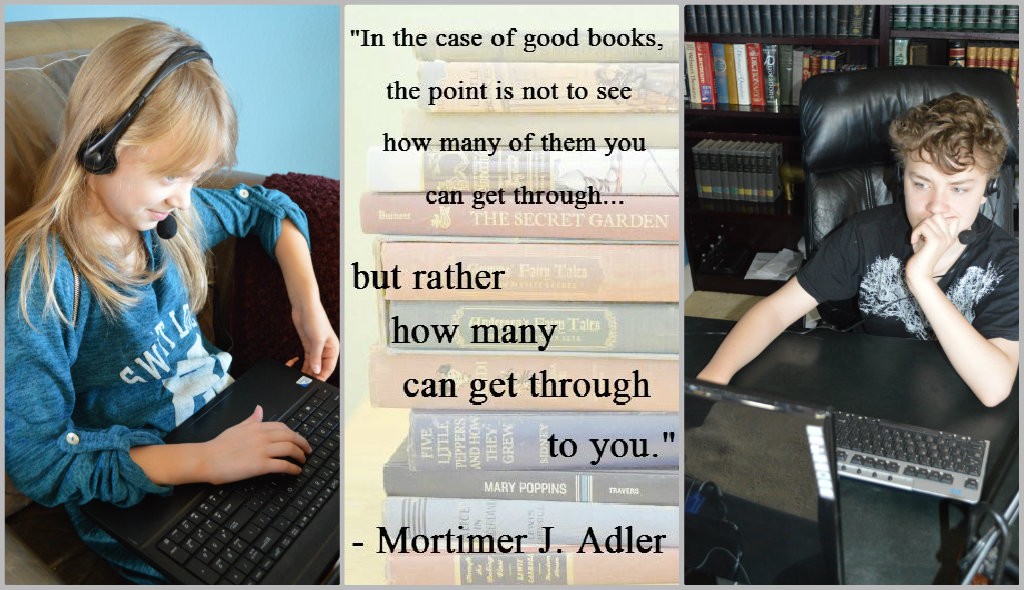 Further, his understanding is greater to the degree that his account is the one that comes closest to the cause itself. The discussion method facilitates the student’s quest for understanding by requiring him to answer questions on his own, to ponder the validity of what others have said or written, and (not the least of which) to give reasoned support of his own opinion to the other students in the group. While the discussion method is a powerful tool, it is by no means the only activity by which people learn. There are three distinct activities by which learning takes place.
Further, his understanding is greater to the degree that his account is the one that comes closest to the cause itself. The discussion method facilitates the student’s quest for understanding by requiring him to answer questions on his own, to ponder the validity of what others have said or written, and (not the least of which) to give reasoned support of his own opinion to the other students in the group. While the discussion method is a powerful tool, it is by no means the only activity by which people learn. There are three distinct activities by which learning takes place.
The first type of learning activity is to memorize material, and while memory skills are essential to learning, what one memorizes, one can also forget. The second activity is the development of intellectual skills such as adding, reading, and writing. The second method draws on the foundation of the first. For example, since one learns to read by reading, there are certain rules of phonics which are memorized that assist in the process.
Development of these intellectual skills is best carried out the closer the ratio between the number of students and teachers approaches 1 to 1. Teaching a young child how to write a cursive “a” takes some time and attention. Teaching 24 to 30 children at the same time how to do the same task is simply not efficient. Accordingly, it becomes evident that homeschooling is ideally suited to these fundamental learning activities. It is important to remember, however, that these activities are each ordered to the third activity, that is, the activity of increasing understanding. The activity best suited to developing understanding is participation in a principled discussion among other students who challenge one another to think as they all search for truth together.
Man does not forget that which he understands, and when a man understands both the world he lives in and his true place in it, he is empowered with the ability to choose rightly for his own betterment and the betterment of those around him. Additionally, it is important to note that the activity of increasing understanding is not limited to the material world. The phrase “faith seeking understandi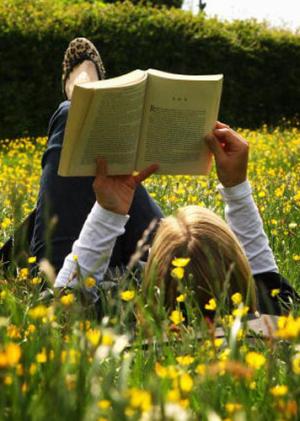 ng” acknowledges that even those things we know by the grace of religious faith are not contrary to reason, even if they happen to be above reason. Articles of faith are known by grace and divine revelation, yet one can increase understanding of much that is held by faith. This is possible because faith and reason are complementary, they go hand in hand. Even Jesus employed discussion to force his disciples to articulate what they held by faith when he asked, “But whom do you say that I am?” Through parables and returning question for question, Jesus engaged the minds, the reason, of those with whom he spoke.
ng” acknowledges that even those things we know by the grace of religious faith are not contrary to reason, even if they happen to be above reason. Articles of faith are known by grace and divine revelation, yet one can increase understanding of much that is held by faith. This is possible because faith and reason are complementary, they go hand in hand. Even Jesus employed discussion to force his disciples to articulate what they held by faith when he asked, “But whom do you say that I am?” Through parables and returning question for question, Jesus engaged the minds, the reason, of those with whom he spoke.
It is a fact of human nature that a man often thinks he knows something until he is forced to articulate it. In other words, an indistinct “knowledge” of something – which is really little more than a feeling – reveals its true nature in the process of being brought into the light of discussion. The beauty of the process is that in finding the limit of our knowledge we not only discover where our ignorance ends, but also where our true knowledge begins. Possibly this was the case when Peter’s response to Jesus required him to say, “Thou art Christ, the Son of the living God.”
It has been said here that homeschooling is ideal for the foundational learning activities of intellectual skill development. On the other hand, homeschooling parents will immediately encounter problems if they seek to have their children engage in serious discussion with other children reading the same works and learning at the same level. Even a large family with many children schooling at home cannot have everyone reading and discussing The Iliad or Democracy in America (to name only two) at the same time or at the same level of comprehension. The Socratic discussion requires the challenge of one’s peers in order to push the student to excel at his greatest intellectual capacity. How then are homeschooling parents to provide such an opportunity for their children? The answer is found in the rapidly increasing opportunities for “distance learning” made possible by the Internet.
Seemingly overnight the Internet has had an unprecedented impact on the culture of the entire world. People who find themselves on opposite sides of the Earth can now communicate instantaneously using personal computers which become less expensive almost daily. Whether people are buying books online, “chatting” with others with their keyboards, sending e-mail, or conducting live conferencing with sound, everyday the Internet is effectively removing the need to be near someone in order to engage them in a wide range of activities. It is now possible to create Internet classrooms that allow students from all over the world to speak to one another with live audio. This is the natural solution for homeschool families seeking a Socratic discussion opportunity, and as the technology develops, the ability to see, hear, and speak to many individuals around the world – all at the same time and all in the same virtual “room” – will become commonplace.
KRESTA IN THE AFTERNOON with Angelicum President, Patrick Carmack
Please note:
Interview with Patrick Carmack runs approximately from minute 8:25 to 18:00.
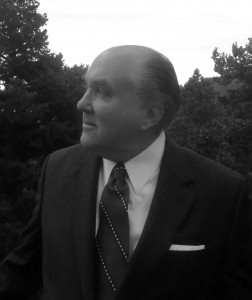
Patrick S. J. Carmack
Wisdom is generally acknowledged to be the highest good of the human mind, whether this be recognized as knowledge of first principles and causes or as a contemplative gaze at Wisdom itself. How does one obtain wisdom? The means is primarily conversation with great and wise persons who have already advanced far along the paths of knowledge and understanding to wisdom. As Angelicum Chairman, the philosopher Dr. Peter Redpath succinctly puts it when addressing audiences of young people interested in understanding why they ought to read great books: “If you wish to become wise, learn from wise people.”
Because persons of great wisdom are rare and generally unavailable to us due to distance or death, we enter into conversation with them through their books, which record their thought. In doing so we soon discover how all the authors of great books used this same method of study themselves—conversing with or reading the great books of the sages of earlier generations as their starting point. In so doing they avoid having to re-invent the wheel each generation; they avoid mistakes already dealt with and build on existing foundations. Indeed, what would be the point in studying mediocre works by lesser luminaries or beginning all thought over from square one every few years, when great books by the wisest people – the great sages of civilization – are now readily available?
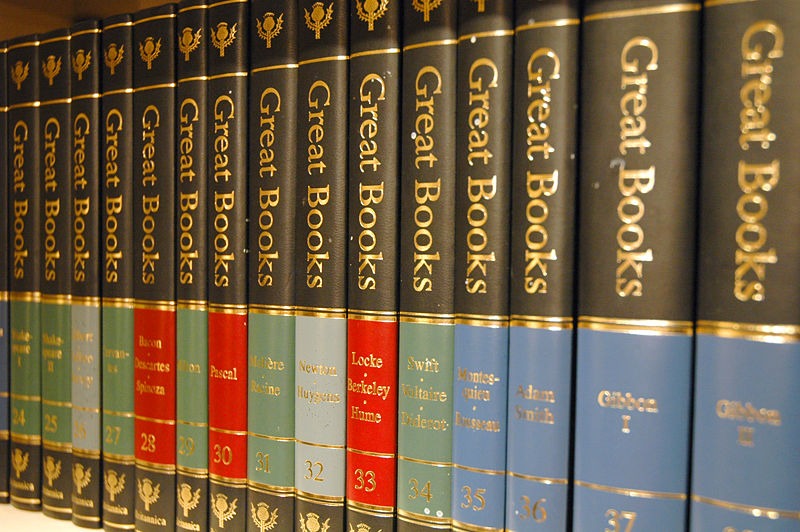 “The reading of all good books is indeed like a conversation with the noblest men of past centuries who were the authors of them, nay a carefully studied conversation, in which they reveal to us none but the best of their thoughts.” – Descartes, Discourse on Method, I
“The reading of all good books is indeed like a conversation with the noblest men of past centuries who were the authors of them, nay a carefully studied conversation, in which they reveal to us none but the best of their thoughts.” – Descartes, Discourse on Method, I
Through the internal dialectical process found in the great books – the references, discussions, critiques and responses to the thought of their wise predecessors, referred to as the “Great Conversation” by Hutchins – we may closely follow the development of the investigations conducted by these sages into the great ideas they have pondered and about which they have written. This manner of study has always been the normative approach to wisdom in the West.
“Until lately the West has regarded it as self-evident that the road to education lay through great books. No man was educated until he was acquainted with the masterpieces of his tradition…they were the principal instruments of liberal education…The goal toward which Western society moves is the Civilization of the Dialogue. The spirit of Western civilization is the spirit of inquiry. Its dominant element is Logos.” – Robert M. Hutchins
No ongoing dialogue comparable in duration or breadth exists in the East. Pope Benedict XVI has mentioned that Western civilization has become the dominant civilization because of its closer correspondence to human nature. In his 2006 Regensburg lecture he noted that there exists a real analogy between our created reason and God who is “Logos” (meaning both reason and word). To abandon reason and hence the dialogue which is both its natural expression and necessary aid would be contrary both to the nature of man and of God. The cumulative wisdom of the West is preserved and transmitted in its great music and art but most particularly in the study of its great books which record the results of three millennia of dialogue guided by reason concerning the most profound ideas with which we all must grapple such as existence, life, love, happiness, etc.
This manner of learning is greatly facilitated when the reader also engages in a dialectic (from the ancient Greek dia – “one with another”) exchange – a live conversation (in person or now online) – with other readers of the same books, probing and discussing the great ideas contained in them and carrying them a few steps farther. This method of learning is often referred to as the Socratic method after the ancient Athenian philosopher Socrates, who initiated its use as a deliberate way to obtain understanding and wisdom with the aid of other minds at work on the same idea. This same “questioning” method was used by Christ, who often answered questions with questions, parables and stories that left the hearers wondering, questioning and thinking. He already knew the answers, as Socrates often did. The goal was not merely indoctrination of the me mory with information, facts and knowledge, but mind-and-life-changing thinking, understanding and ultimately, wisdom.
mory with information, facts and knowledge, but mind-and-life-changing thinking, understanding and ultimately, wisdom.
The Angelicum Great Books Study Guides are intended for students (if one is still learning one is a student) who have read lesser works, particularly the classics for young people. Given that preparation students high school age (14) and up, including adults, can pick up Homer’s Iliad and Odyssey or Herodotus’ Histories and other great works and enter into the seminal thought and most influential books of our culture and civilization. There is reason not to delay such education.
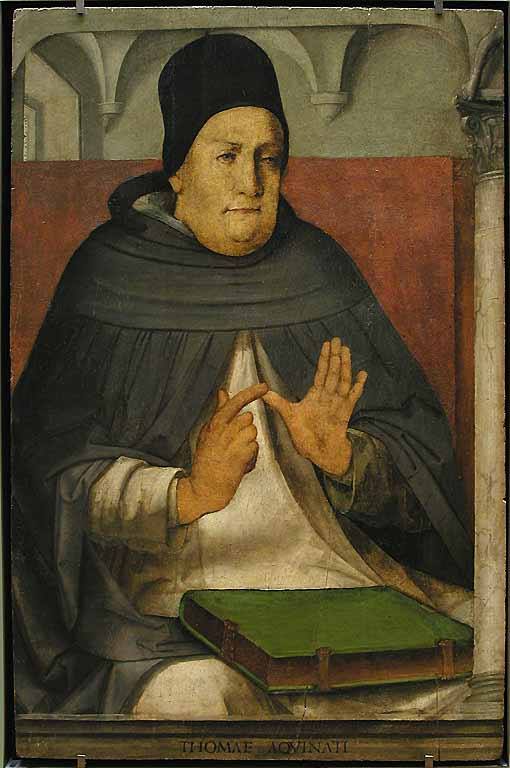 The great books are, for the most part, the most interesting and well written of all books. They were not written for experts. Their wide and enduring appeal to generation after generation testifies to that fact. Readers reasonably prepared for them will find them captivating, entertaining and enlightening. Naturally some readers will profit more than others from the great books, but all will profit from learning about the Trojan war, the heroes of ancient Greece, ancient civilizations, the early tragedies, the thought of Aristotle, Genesis, the Aeneid, the Confessions of St. Augustine, Chaucer’s Canterbury Tales, Dante’s Divine Comedy, selections from the Summa Theologica by St. Thomas Aquinas, Shakespeare’s plays and so on, since these works are foundational and/or profoundly influential on our way of life. These works are essential for participation in the Great Conversation mentioned above. That enduring intellectual dialogue spans nearly three millennia beginning with the works of Homer, the “Father of Civilization,” and proceeding through the centuries eventually incorporating the Old and New Testaments in a lengthy reformulation of classical civilization into Western civilization, which continues – albeit always under assault by various corrupting errors – right up to our day.
The great books are, for the most part, the most interesting and well written of all books. They were not written for experts. Their wide and enduring appeal to generation after generation testifies to that fact. Readers reasonably prepared for them will find them captivating, entertaining and enlightening. Naturally some readers will profit more than others from the great books, but all will profit from learning about the Trojan war, the heroes of ancient Greece, ancient civilizations, the early tragedies, the thought of Aristotle, Genesis, the Aeneid, the Confessions of St. Augustine, Chaucer’s Canterbury Tales, Dante’s Divine Comedy, selections from the Summa Theologica by St. Thomas Aquinas, Shakespeare’s plays and so on, since these works are foundational and/or profoundly influential on our way of life. These works are essential for participation in the Great Conversation mentioned above. That enduring intellectual dialogue spans nearly three millennia beginning with the works of Homer, the “Father of Civilization,” and proceeding through the centuries eventually incorporating the Old and New Testaments in a lengthy reformulation of classical civilization into Western civilization, which continues – albeit always under assault by various corrupting errors – right up to our day.
The principal guides in selecting the works of enduring appeal to be included in the great books, besides generations of readers, include the late, great Dr. Mortimer J. Adler, who worked for eighty years (from 1921 to 2000 A.D. when I had the memorable privilege of participating in his last Socratic discussion groups) to restore and keep the great classics, including particularly those by Plato, Aristotle and St. Thomas Aquinas, in the Western canon of great books. As Dr. Adler put it: “The great books constitute the backbone of a liberal education.” But read alone in our post-modernist context of radical skepticism the great books can easily be misunderstood and used for all manner of mischief. It was precisely to provide a deeper understanding of the importance and influence of the great books – to highlight what is true and great in them and to expose and defang whatever is false in them – that the Angelicum Great Books Study Guides were written and that we offer weekly, live and lively, Great Books discussions online.
Augmenting the work of Dr. Adler, is Joseph Pearce, the author of several critically acclaimed, best-selling biographies of great authors, who has diligently worked as the author and/or editor of the Angelicum Great Books Study Guides. Homeschoolers and other students will find in these guides a welcome and trustworthy means of introduction to the great books and to their careful and critical reading, planned to include eventually over 100 titles.
Finally, it is worthwhile to mention that study guides are merely introductory guides (with tests, questions and answer keys helpful for student assessment). The great books themselves are the primary texts, their authors our primary teachers, and our experienced moderators and Great Books Program students our fellow learners who are an indispensable part of the weekly Socratic discussions so important to understanding the great ideas contained in the Great Books.
Patrick S.J. Carmack
President, Angelicum Academy
January 18, 2008
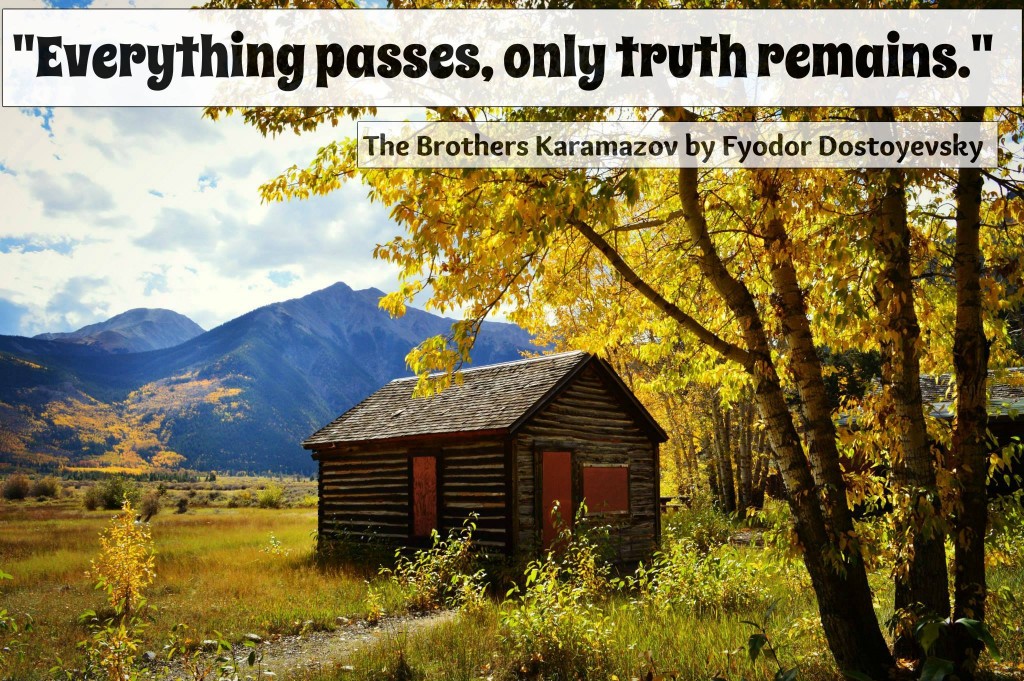
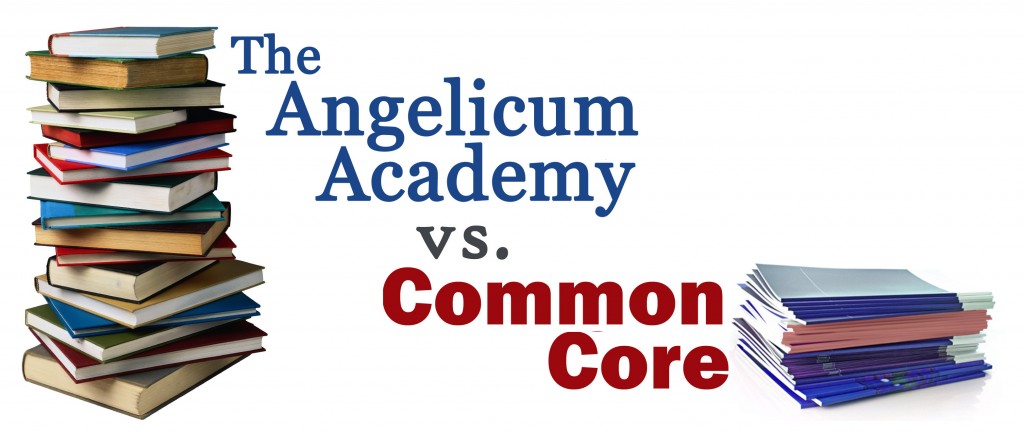
For the sake of a uniformity in education promoted as a good so that when students move to different schools they will be on the same page in their various courses (the strongest favorable argument), and so that extensive testing can measure student progress comparatively through the common core (more “educating to the test”), a curriculum/educational standards/testing regime has been adopted by 45 States and many Catholic and other private schools called the Common Core (due to severe criticism it is changing its name here and there).
This initiative was heavily funded by internet software and book publishing houses that stand to make literally billions of dollars on its nationwide implementation. Many States and schools adopted the Common Core prior to even knowing what it contained. None adopted it after field testing – there was none. Now that the initial – unfavorable – results are coming in, some schools are dropping Common Core, which has stalled out and a widespread movement to abandon it is spreading.
There are numerous objections to the Common Core, listed below, but our first and primary objection is the significant weakening of the literature portion of the recommended curriculum. Students in the Common Core will be reading less literature, and more “non-fiction” or “informational texts” such as bland, politically biased government EPA and FDA brochures or Federal Reserve System handouts that defend their policies – in other words propaganda.
Page 5 of the introduction to the Common Core English Standards presents a chart that shows that children in grade 4 will be reading 50% “informational” texts vs. literary texts. By grade 8 they will be reading 55% “information texts”; and by grade 12, 70% “informational texts” and only 30% literature.
Because the Common Core Standards Initiative ties teachers’ evaluations to the scores their students make on the Common Core assessments, teachers are indirectly pressured to teach the Common Core Literature Text Exemplars and Sample Performance Tasks. Two of such “Text Exemplars” contain what most people would judge to be pornographic sections. We are not prudes – these two works contain raunchy, inappropriate, lascivious, prurient and sexualized sections: Dreaming in Cuban by Cristina Garcia, and The Bluest Eye by Toni Morrison. Readers may google them to read the texts to judge for themselves – we will not post them here.
What is particularly troubling about including such texts – besides the fact that they contain such unacceptable sections and are otherwise by no means great literature, is the intention and lack of judgment of the people who selected such books in the first place. After including such works – for no literary merit – should we trust them any further? No one with any common sense would have included such texts. Who are these people and what are they up to? Whatever their aims, these selections alone disqualify them from any further serious consideration as good judges of literature, and hence disqualifies the Common Core list they selected as a list any school should follow or use for any purpose.
Going through the rest of the Common Core literature “text exemplars” for high school, we find approximately 54 (39%) out of about 136 books (excluding poetry) that would generally be considered classics and some even Great Books. To be fair, for many schools getting the students to read 54 classics would be a huge improvement; for good-to-excellent schools that should be far too few over 4 years –which exemplifies the “race-to-the-middle” criticism of the mediocrity of the Common Core. But even that is too generous to Common Core: many of these texts are read only in short excerpts, with commentary or answers suggested to teachers that betray a liberal political bias, an anti-religious worldview, or are simply incorrect, and chronologically mixed up.
Here is a brief summary list of additional problems with the Common Core:
Insufficient, utopian and radical aims of education
A set of mediocre academic standards
A pseudo-science of textual “complexity” disguising the real intent of requiring students to read things that would not be found in a traditional literature class
Superficiality and bias in the choosing of “texts” for reading, to the neglect of the true, great classics
Simplistic and mind-numbing ways of reading any good literature that remains in the curriculum
The continuing dumbing down of English classes
And a tyranny of textbooks that ensures teaches will force on students the absurdities and bias that is the strange brew of the Common Core.
We would add to the above list:
No coherent or logical organization to the readings, which mix genres and time periods without explanation or apparent purpose
A defective measure of text difficulty – which seems to be the only organizing principle
No consistence reference to – indeed, an apparent ignorance of or neutrality to – any historical significance of the books chosen , their importance, lasting influence and connection to the Great Conversation of Western civilization
No consistency seems to be placed on the moral value of the books selected, with a resulting poverty of meaning, moral worth or search for the transcendent – the good, the true, the beautiful
An excessive representation of modern books such as Harry Potter and Hunger Games, with no time-testing of their literary worth or lasting influence
A “Math by Estimation” approach that allows “3 x 4 = 11” not to be marked incorrect, but to be praised for method – even though incorrect (to be sure, math always included consideration of the means, but the correct answer was also critical – both are essential)
We could go on at length in discussing the failures of the Common Core. There are many online articles detailing these. For our purposes this is sufficient.
In conclusion, the Angelicum Academy curriculum – which is classic literature-based – is the very antithesis of the Common Core.
[i] The Story-Killers, A Common –Sense Case Against the Common Core, Terrence O. More (Lexington, KY 2014)………………………………………………………………………………………………………………………………………………………………………………
Catholic scholars blast Common Core
By Valerie Strauss, Published: NOVEMBER 02, 9:41 AM ET The Answer Sheet
About 130 Catholic scholars around the country have signed a hard-hitting letter to U.S. Catholic bishops denouncing the Common Core State Standards as doing “a grave disservice to Catholic education” and urging the bishops to ignore the standards or, in the more than 100 dioceses that have already adopted them, to give them up.
The letter was sent by Gerard V. Bradley, a law professor at the University of Notre Dame, to every Catholic bishop in the country, with 132 scholars from various disciplines and institutions signing on.
It blasts the standards, saying they are “contrary to tradition and academic studies on reading and human formation,” and accuses Core proponents of seeking to “transform ‘literacy’ into a ’critical’ skill set, at the expense of sustained and heartfelt encounters with great works of literature.” (That last part is a reference to what Core opponents say is a cut in the amount of literature teachers are to make in favor of more works of non-fiction.)
The letter, which calls the Core ”a recipe for standardized workforce preparation,” cites criticism of the standards by academics including James Milgram, professor emeritus of mathematics at Stanford University, and Sandra Stotsky, professor emerita of education at the University of Arkansas. They have both testified before various state legislatures against the Core, saying the standards aren’t strong enough to prepare students for college. Supporters of the Core argue otherwise.
Here’s the text of the letter:
Gerard V. Bradley, Professor of Law
c/o University of Notre Dame, The Law School
3156 Eck Hall of Law, PO Box 780
Notre Dame, IN 46556
October 16, 2013
This letter was sent individually to each Catholic bishop in the United States. 132 Catholic professors signed the letter.
Your Excellency:
We are Catholic scholars who have taught for years in America’s colleges and universities. Most of us have done so for decades. A few of us have completed our time in the classroom; we are professors “emeriti.” We have all tried throughout our careers to put our intellectual gifts at the service of Christ and His Church. Most of us are parents, too, who have seen to our children’s education, much of it in Catholic schools. We are all personally and professionally devoted to Catholic education in America.
For these reasons we take this extraordinary step of addressing each of America’s Catholic bishops about the “Common Core” national reform of K-12 schooling. Over one hundred dioceses and archdioceses have decided since 2010 to implement the Common Core. We believe that, notwithstanding the good intentions of those who made these decisions, Common Core was approved too hastily and with inadequate consideration of how it would change the character and curriculum of our nation’s Catholic schools. We believe that implementing Common Core would be a grave disservice to Catholic education in America.
In fact, we are convinced that Common Core is so deeply flawed that it should not be adopted by Catholic schools which have yet to approve it, and that those schools which have already endorsed it should seek an orderly withdrawal now.
Why – upon what evidence and reasoning – do we take such a decisive stand against a reform that so many Catholic educators have endorsed, or at least have acquiesced in?
In this brief letter we can only summarize our evidence and sketch our reasoning. We stand ready, however, to develop these brief points as you wish. We also invite you to view the video recording of a comprehensive conference critically examining Common Core, held at the University of Notre Dame on September 9, 2013. (For a copy of the video, please contact Professor Gerard Bradley at the address above.)
News reports each day show that a lively national debate about Common Core is upon us. The early rush to adopt Common Core has been displaced by sober second looks, and widespread regrets. Several states have decided to “pause” implementation.
Others have opted out of the testing consortia associated with Common Core. Prominent educators and political leaders have declared their opposition. The national momentum behind Common Core has, quite simply, stopped. A wave of reform which recently was thought to be inevitable now isn’t. Parents of K- 12 children are leading today’s resistance to the Common Core. A great number of these parents are Catholics whose children attend Catholic schools.
Much of today’s vigorous debate focuses upon particular standards in English and math. Supporters say that Common Core will “raise academic standards.” But we find persuasive the critiques of educational experts (such as James Milgram, professor emeritus of mathematics at Stanford University, and Sandra Stotsky, professor emerita of education at the University of Arkansas) who have studied Common Core, and who judge it to be a step backwards. We endorse their judgment that this “reform” is really a radical shift in emphasis, goals, and expectations for K-12 education, with the result that Common Core-educated children will not be prepared to do authentic college work. Even supporters of Common Core admit that it is geared to prepare children only for community-college-level studies.
No doubt many of America’s Catholic children will study in community colleges. Some will not attend college at all. This is not by itself lamentable; it all depends upon the personal vocations of those children, and what they need to learn and do in order to carry out the unique set of good works entrusted to them by Jesus. But none of that means that our Catholic grade schools and high schools should give up on maximizing the intellectual potential of every student. And every student deserves to be prepared for a life of the imagination, of the spirit, and of a deep appreciation for beauty, goodness, truth, and faith.
The judgments of Stotsky and Milgram (among many others) are supported by a host of particulars. These particulars include when algebra is to be taught, whether advanced mathematics coursework should be taught in high school, the misalignment of writing and reading standards, and whether cursive writing is to be taught.
We do not write to you, however, to start an argument about particulars. At least, that is a discussion for another occasion and venue. We write to you instead because of what the particular deficiencies of Common Core reveal about the philosophy and the basic aims of the reform. We write to you because we think that this philosophy and these aims will undermine Catholic education, and dramatically diminish our children’s horizons.
Promoters of Common Core say that it is designed to make America’s children “college and career ready.” We instead judge Common Core to be a recipe for standardized workforce preparation. Common Core shortchanges the central goals of all sound education and surely those of Catholic education: to grow in the virtues necessary to know, love, and serve the Lord, to mature into a responsible, flourishing adult, and to contribute as a citizen to the process of responsible democratic self-government.
Common Core adopts a bottom-line, pragmatic approach to education. The heart of its philosophy is, as far as we can see, that it is a waste of resources to “over-educate” people. The basic goal of K-12 schools is to provide everyone with a modest skill set; after that, people can specialize in college – if they end up there. Truck-drivers do not need to know Huck Finn. Physicians have no use for the humanities. Only those destined to major in literature need to worry about Ulysses.
Perhaps a truck-driver needs no acquaintance with Paradise Lost to do his or her day’s work. But everyone is better off knowing Shakespeare and Euclidean geometry, and everyone is capable of it. Everyone bears the responsibility of growing in wisdom and grace and in deliberating with fellow-citizens about how we should all live together. A sound education helps each of us to do so.
The sad facts about Common Core are most visible in its reduction in the study of classic, narrative fiction in favor of “informational texts.” This is a dramatic change. It is contrary to tradition and academic studies on reading and human formation. Proponents of Common Core do not disguise their intention to transform “literacy” into a “critical” skill set, at the expense of sustained and heartfelt encounters with great works of literature.
Professor Stotsky was the chief architect of the universally-praised Massachusetts English language arts standards, which contributed greatly to that state’s educational success. She describes Common Core as an incubator of “empty skill sets . . . [that] weaken the basis of literary and cultural knowledge needed for authentic college coursework.” Rather than explore the creativity of man, the great lessons of life, tragedy, love, good and evil, the rich textures of history that underlie great works of fiction, and the tales of self-sacrifice and mercy in the works of the great writers that have shaped our cultural literacy over the centuries, Common Core reduces reading to a servile activity.
Professor Anthony Esolen, now at Providence College, has taught literature and poetry to college students for two decades. He provided testimony to a South Carolina legislative committee on the Common Core, lamenting its “cavalier contempt for great works of human art and thought, in literary form.” He further declared: “We are not programming machines. We are teaching children. We are not producing functionaries, factory-like. We are to be forming the minds and hearts of men and women.”
Thus far Common Core standards have been published for mathematics and English language arts. Related science standards have been recently released by Achieve, Inc. History standards have also been prepared by another organization. No diocese (for that matter, no state) is bound to implement these standards just by dint of having signed onto Common Core’s English and math standards. We nonetheless believe that the same financial inducements, political pressure, and misguided reforming zeal that rushed those standards towards acceptance will conspire to make acceptance of the history and science standards equally speedy – and unreflective and unfortunate.
These new standards will very likely lower expectations for students, just as the Common Core math and English standards have done. More important, however, is the likelihood that they will promote the prevailing philosophical orthodoxies in those disciplines. In science, the new standards are likely to take for granted, and inculcate students into a materialist metaphysics that is incompatible with, the spiritual realities -soul, conceptual thought, values, free choice, God- which Catholic faith presupposes. We fear, too, that the history standards will promote the easy moral relativism, tinged with a pervasive anti-religious bias, that is commonplace in collegiate history departments today.
Common Core is innocent of America’s Catholic schools’ rich tradition of helping to form children’s hearts and minds. In that tradition, education brings children to the Word of God. It provides students with a sound foundation of knowledge and sharpens their faculties of reason. It nurtures the child’s natural openness to truth and beauty, his moral goodness, and his longing for the infinite and happiness. It equips students to understand the laws of nature and to recognize the face of God in their fellow man. Education in this tradition forms men and women capable of discerning and pursuing their path in life and who stand ready to defend truth, their church, their families, and their country.
The history of Catholic education is rich in tradition and excellence. It embraces the academic inheritance of St. Anselm, St. Augustine, St. Thomas Aquinas, and Blessed John Henry Newman. In contrast to such academic rigor, the Common Core standards lack an empirical evidentiary basis and have not been field-tested anywhere. Sadly, over one hundred Catholic dioceses have set aside our teaching tradition in favor of these secular standards.
America’s bishops have compiled a remarkable record of success directing Catholic education in America, perhaps most notably St. John Neumann and the Plenary Councils of Baltimore. Parents embrace that tradition and long for adherence to it – indeed, for its renaissance. That longing reflects itself in the growing Catholic homeschool and classical-education movements and, now, in the burgeoning desire among Catholic parents for their dioceses to reject the Common Core.
Because we believe that this moment in history again calls for the intercession of each bishop, we have been made bold to impose upon your time with our judgments of Common Core.
[1] The Story-Killers, A Common –Sense Case Against the Common Core, Terrence O. More (Lexington, KY 2014)Faithfully in Christ, we are:
Institutional Affiliations Are for Identification Purposes Only
Gerard Bradley
Professor of Law
University of Notre Dame
Robert P. George
McCormick Professor of Jurisprudence
Princeton University
Anthony M. Esolen
Professor of English
Providence College
Anne Hendershott
Professor of Sociology
Franciscan University of Steubenville
Kevin Doak
Professor
Georgetown University
Joseph A. Varacalli
S.U.N.Y. Distinguished Service Professor
Nassau Community College-S.U.N.Y.
Patrick McKinley Brennan
John F. Scarpa Chair in Catholic Legal Studies
Villanova University School of Law
Robert Fastiggi, Ph.D.
Professor of Systematic Theology
Detroit, MI
Duncan Stroik
Professor of Architecture
University of Notre Dame
Thomas F. Farr
Director, Religious Freedom Project and
Visiting Associate Professor
Georgetown University
Matthew J. Franck, Ph.D.
Director, Simon Center on Religion and the Constitution
Witherspoon Institute
Ronald J. Rychlak
Butler Snow Lecturer and Professor of Law
University of Mississippi, School of Law
V. Bradley Lewis
Associate Professor of Philosophy
The Catholic University of America
Patrick J. Deneen
David A. Potenziani Memorial Associate
Professor of Political Science
University of Notre Dame
E. Christian Brugger, D.Phil.
J. Francis Cardinal Stafford Professor of Moral Theology
Saint John Vianney Theological Seminary, Denver
Kenneth L. Grasso
Professor of Political Science
Texas State University
James Hitchcock
Professor of History
Saint Louis University
Maria Sophia Aguirre, Ph.D.
Director of Economics Programs and Academic Chair
The Catholic University of America
Fr. Joseph Koterski SJ
President, Fellowship of Catholic Scholars
Fordham University
Francis J. Beckwith
Professor of Philosophy and Church-State Studies
Baylor University
Thomas V. Svogun
Professor of Philosophy and Administration of Justice and
Chairman of the Department of Philosophy
Salve Regina University
Scott W Hahn
Professor of Theology
Franciscan University of Steubenville
Eduardo J. Echeverria, Ph.D., S.T.L.
Professor of Philosophy and Systematic Theology
Sacred Heart Major Seminary
Ryan J. Barilleaux, Ph.D.
Paul Rejai Professor of Political Science
Miami University (Ohio)
Brian Simboli, Ph.D.
Science Librarian
Lehigh University
John A. Gueguen
Emeritus Professor, Political Philosophy
Illinois State University
G. Alexander Ross
Institute for the Psychological Sciences
Suzanne Carpenter, Ph.D., R.N.
Associate Professor of Nursing
Retired
Patrick Lee
McAleer Professor of Bioethics
Franciscan University of Steubenville
Peter J. Colosi, PhD
Associate Professor of Moral Theology
St. Charles Borromeo Seminary
Dr. Robert Hunt
Professor of Political Science
Kean University
Matthew Cuddeback, PhD
Assistant Professor of Philosophy
Providence College
Dr. Joseph H. Hagan
President Emeritus
Assumption College
John A. Cuddeback, PhD
Professor of Philosophy
Christendom College
Dr. Michael J. Healy
Professor and Chair of Philosophy
Franciscan University of Steubenville
Thomas Hibbs
Dean of the Honors College
Baylor University
Susan Orr Traffas
Co-Director, Honors Program
Benedictine College
Michael J. Behe
Professor of Biological Sciences
Lehigh University
Thomas R. Rourke
Professor of Politics
Clarion University
Robert H Holden
Professor, Dept. of History
Old Dominion University
Philip J. Harold
Associate Dean, School of Education and Social Sciences
Robert Morris University
David T. Murphy, Ph.D.
Dept. of Modern & Classical Languages
Saint Louis University
W. H. Marshner
Professor of Theology
Christendom College
David W. Fagerberg
Associate Professor, Theology
University of Notre Dame
Melissa Moschella
Assistant Professor of Philosophy
Catholic University of America
Daniel J. Costello, Jr.
Bettex Professor of Electrical Engineering, Emeritus
University of Notre Dame
Brian Scarnecchia,
Associate Professor of Law
Ave Maria School of Law
Thomas Behr
Assistant Professor of Comparative Cultural Studies
University of Houston
Bernard Dobranski
Dean Emeritus and Professor of Law
Ave Maria School of Law
Daniel Philpott
Professor, Political Science and Peace Studies
University of Notre Dame
Anne Barbeau Gardiner
Professor emerita, Dept of English
John Jay College, CUNY
C.C. Pecknold
Assistant Professor of Theology
The Catholic University of America
Anthony Low
Professor Emeritus of English
New York University
Heather Voccola
Adjunct Professor of Church History
Holy Apostles College and Seminary
Raymond F. Hain, PhD
Assistant Professor of Philosophy
Providence College
Catherine Abbott
Professor of Mathematics
Keuka College
Therese Bonin
Associate Professor of Philosophy
Duquesne University
Dr. Francis P. Kessler
Prof. Political Science
Benedictine College
Christopher Wolfe
Co-Director, Thomas International Center
Emeritus Professor, Marquette University
Carson Holloway
Associate Professor of Political Science
University of Nebraska at Omaha
Stephen M. Krason, J.D., Ph.D.
President
Society of Catholic Social Scientists
Laura Hirschfeld Hollis
Associate Professional Specialist and
Concurrent Associate Professor of Law
University of Notre Dame
Wilson D. Miscamble, C.S.C.,
Professor of History
University of Notre Dame
Stephen M. Barr
Professor of Physics
University of Delaware
D.C. Schindler
Associate Professor of Metaphysics and Anthropology
The John Paul II Institute for Studies on Marriage and Family
Jeanne Heffernan Schindler
Senior Research Fellow
Center for Cultural and Pastoral Concerns
David L. Schindler
Gagnon Professor of Fundamental Theology
Pontifical John Paul II Institute, Catholic University of America
Rev. Edward Krause, C.C.C.
Professor of Social Sciences, Emeritus
Gannon University
Christopher O. Tollefsen
Professor of Philosophy
University of South Carolina
Paige E. Hochschild
Assistant Professor of Theology
Mount St. Mary’s University
Robert C. Jeffrey
Professor of Government
Wofford College
Rev. Anthony E. Giampietro, CSB
Executive Vice President and Academic Dean
Saint Patrick’s Seminary & University
Dr. Roger Loucks
Associate Prof. of Physics
Alfred University
J. Daniel Hammond
Professor of Economics
Wake Forest University
Kenneth R. Hoffmann, Ph.D.
Professor of Neurosurgery
SUNY at Buffalo
Timothy T. O’Donnell, STD, KGCHS
President Christendom College
Thomas W. Jodziewicz
Department of History
University of Dallas
Sr J. Sheila Galligan IHM
Professor of Theology
Immaculata University
Maura Hearden
Assistant Professor of Theology
DeSales University
Robert Gorman
University Distinguished Professor of Political Science
Texas State University
Steven Justice
Professor of English
University of California, Berkeley and
University of Mississippi
Carol Nevin (Sue) Abromaitis
Professor of English
Loyola University Maryland
Dr. Sean Innerst
Theology Cycle Director,
St. John Vianney Theological Seminary
Robert A. Destro
Professor of Law & Director
The Catholic University of America
Richard Sherlock
Prof. of Philosophy
Utah State University
Adrian J. Reimers
Adjunct Assistant Professor in Philosophy
University of Notre Dame
Dr. Jessica M. Murdoch
Assistant Professor of Fundamental and Dogmatic Theology
Villanova University
Mary Shivanandan, S.T.L., S.T.D.
Professor of Theology Retired
John Paul II Institute for Studies on Marriage & Family
at the Catholic University of America
Alice M. Ramos
Professor of Philosophy
St. John’s University
Dennis J. Marshall, Ph.D.
Professor of Theology
Aquinas College
Dennis D. Martin
Associate Professor of Theology
Loyola University Chicago
Janet E. Smith
Father Michael J. McGivney Chair of Life Ethics
Sacred Heart Major Seminary
Leonard J. Nelson,III
Retired Professor of Law
Samford University
Charles D. Presberg, PhD
Associate Professor of Spanish
University of Missouri-Columbia
Brian T. Kelly
Dean
Thomas Aquinas College
Michael F. McLean
President
Thomas Aquinas College
Philip T. Crotty
Professor of Management (Emeritus)
Northeastern University
James Matthew Wilson
Assistant Professor of Literature
Villanova University
R. E. Houser
Bishop Wendelin J. Nold Chair in Graduate Philosophy
University of St. Thomas (TX)
Gary D. Glenn
Distinguished Teaching Professor Emeritus
Department of Political Science, Northern Illinois University
Cynthia Toolin, Ph.D.
Professor of Dogmatic and Moral Theology
Holy Apostles College and Seminary
Virginia L. Arbery, Ph. D.
Associate Professor of Humanities
Wyoming Catholic College
Maryanne M. Linkes, Esquire
Adjunct Professor
University of Pittsburgh & Community College of Allegheny County
James Likoudis, M.S.Ed.
Education writer
Montour Falls, NY 14865
Dr. Emil Berendt
Assistant Professor of Economics
Mount St. Mary’s University
David F. Forte
Professor of Law
Cleveland State University
Anthony W. Zumpetta, Ed.D.
Professor Emeritus
West Chester University (PA)
Thomas D. Watts
Professor Emeritus
University of Texas, Arlington
Catherine Ruth Pakaluk, PhD
Assistant Professor of Economics
Ave Maria University
Craig S. Lent
Freimann Professor of Electrical Engineering
University of Notre Dame
Christina Jeffrey, Ph.D.
Lecturer on the Foundations of American Government
Wofford College
Robert G Kennedy
Professor of Catholic Studies
University of St Thomas (MN)
Holly Taylor Coolman
Assistant Professor, Dept. of Theology
Providence College
Raymond F. Hain, PhD
Assistant Professor of Philosophy
Providence College
David Whalen
Provost
Hillsdale College
David M. Wagner
Professor of Law
Regent University School of Law
John G. Trapani, Jr., Ph.D.
Professor of Philosophy
Walsh University
Tina Holland, Ph.D.
South Bend, Indiana
James F. Papillo, J.D., Ph.D
Former Vice President of Administrative
Affairs and Associate Professor in the Humanities
Holy Apostles College and Seminary
Dr. J. Marianne Siegmund
Theo. Department and SCSS member
University of Dallas
Dr. Daniel Hauser
Professor of Theology
University of St. Francis
Joshua Hochschild
Mount St. Mary’s University
William Edmund Fahey, Ph.D.
Fellow and President
The Thomas More College of Liberal Arts
John C. McCarthy
Dean, School of Philosophy
The Catholic University of America
Christopher O. Blum
Academic Dean
Augustine Institute
Chiyuma Elliott
Assistant Professor of English and African-American Studies
University of Mississippi
Mark C. Henrie
Senior V.P., Chief Academic Officer
Intercollegiate Studies Institute
Jeffrey Tranzillo, Ph.D.
Professor, Systematic Theology
Craig Steven Titus, S.Th.D/Ph.D.
Associate Professor
Director of Integrative Studies
Institute of the Psychological Sciences
Rev. Peter M.J. Stravinskas, Ph.D., S.T.D.
Executive Director
Catholic Education Foundation
William W. Kirk
Vice President for Student Affairs and General Counsel
Ave Maria University
Curt H. Stiles, Ph.D.
Professor of Business Policy
Cameron School of Business
University of North Carolina
Patrick S.J. Carmack, J.D.
Executive Director
Ignatius-Angelicum Liberal studies Program
Angelicum Academy Homeschool Program
For further reading, please click on the articles below.
10 Minimal Adaptations Catholic Schools Should Consider Making to the Common Core State Standards
Pittsburgh Bishop Says ‘No’ to Common Core in Diocesan Schools















